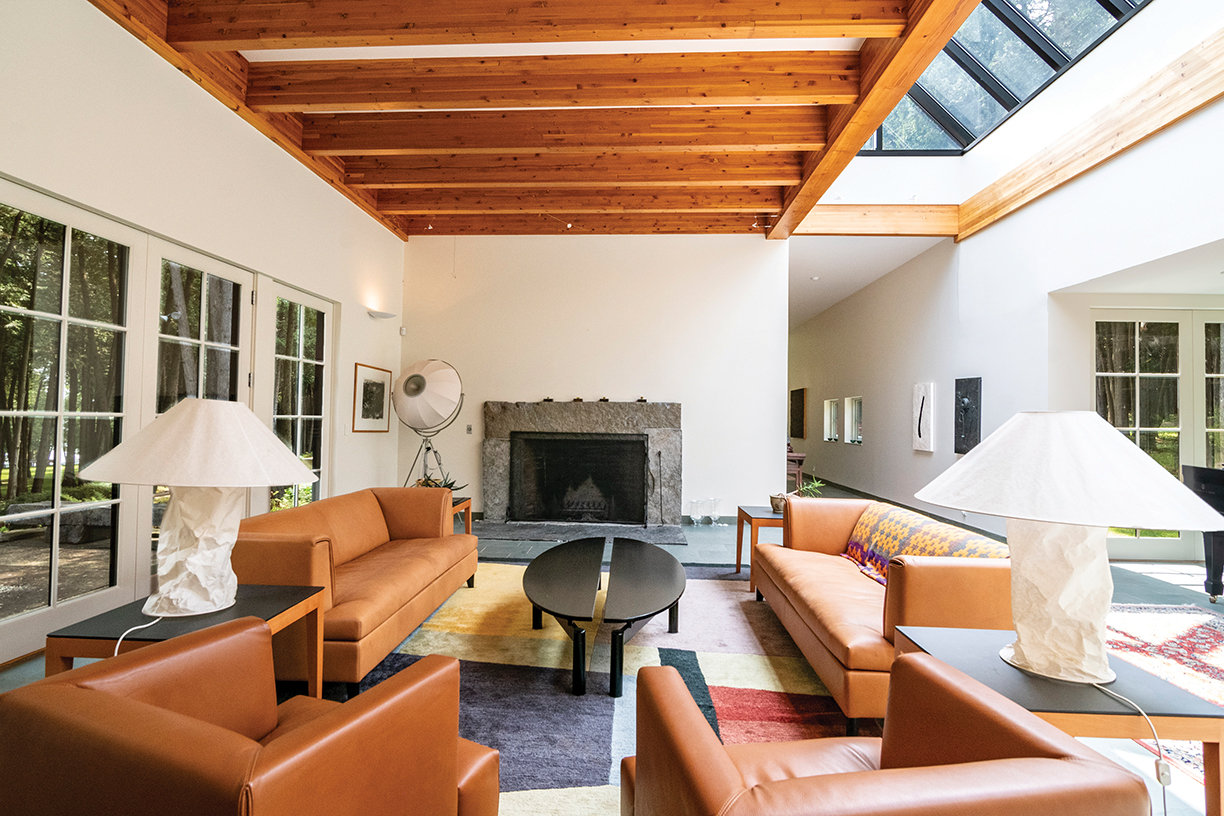
On one of the largest contiguous parcels in the NY Champlain Valley, this 431-acre farm and custom 8,000-square-foot waterfront home showcases mountain views on 646 feet on Lake Champlain. It offers the very finest custom details.
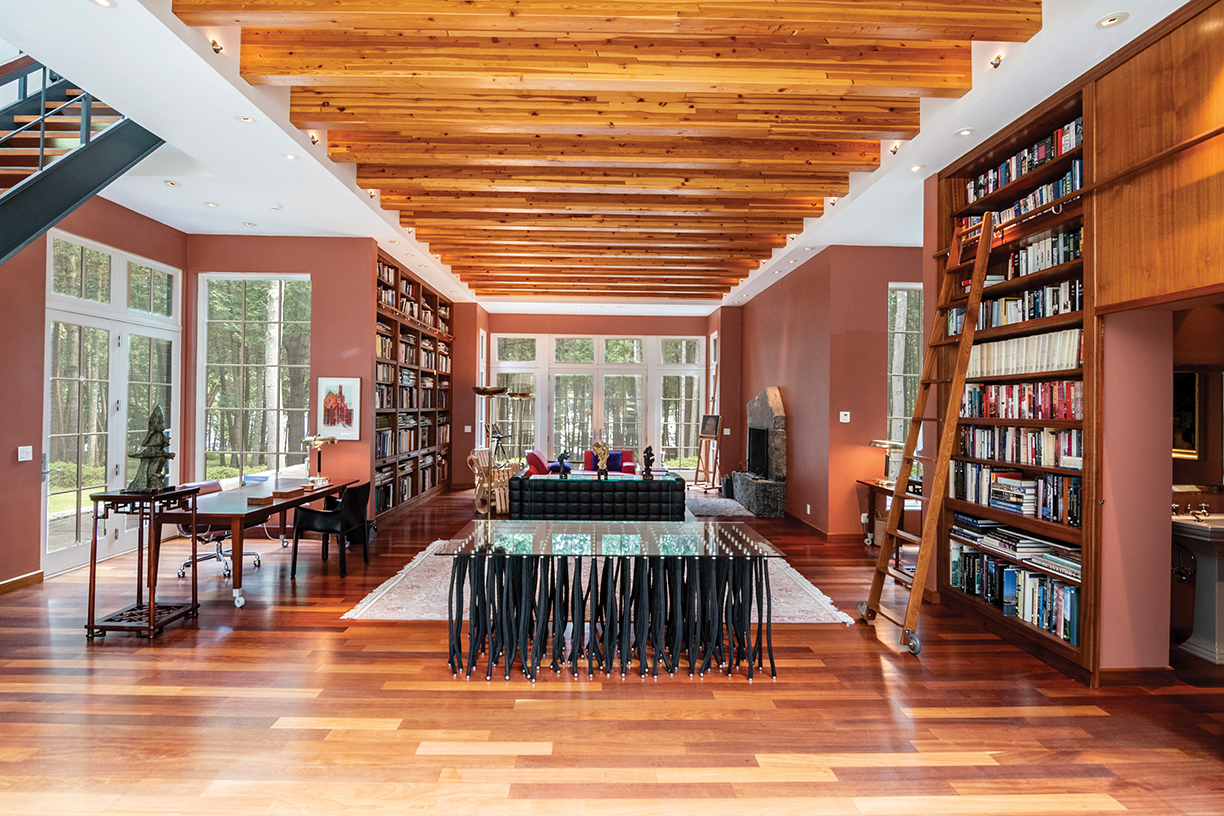

“From the library to the floor-to-ceiling windows, you feel as though you are outside in a gorgeous glass room looking through a filtered view of the manicured mature cedar trees at Lake Champlain and the Green Mountains,” says co-lister Jodi Gunther of Berkshire Hathaway HomeServices Adirondack Premier Properties, who is listing the property with Margie Philo. “In the media room and dining areas there are completely different views of Lake Champlain, but my favorite is the main suite with oversized windows that swing open for amazing Adirondack air and a higher vantage point.”
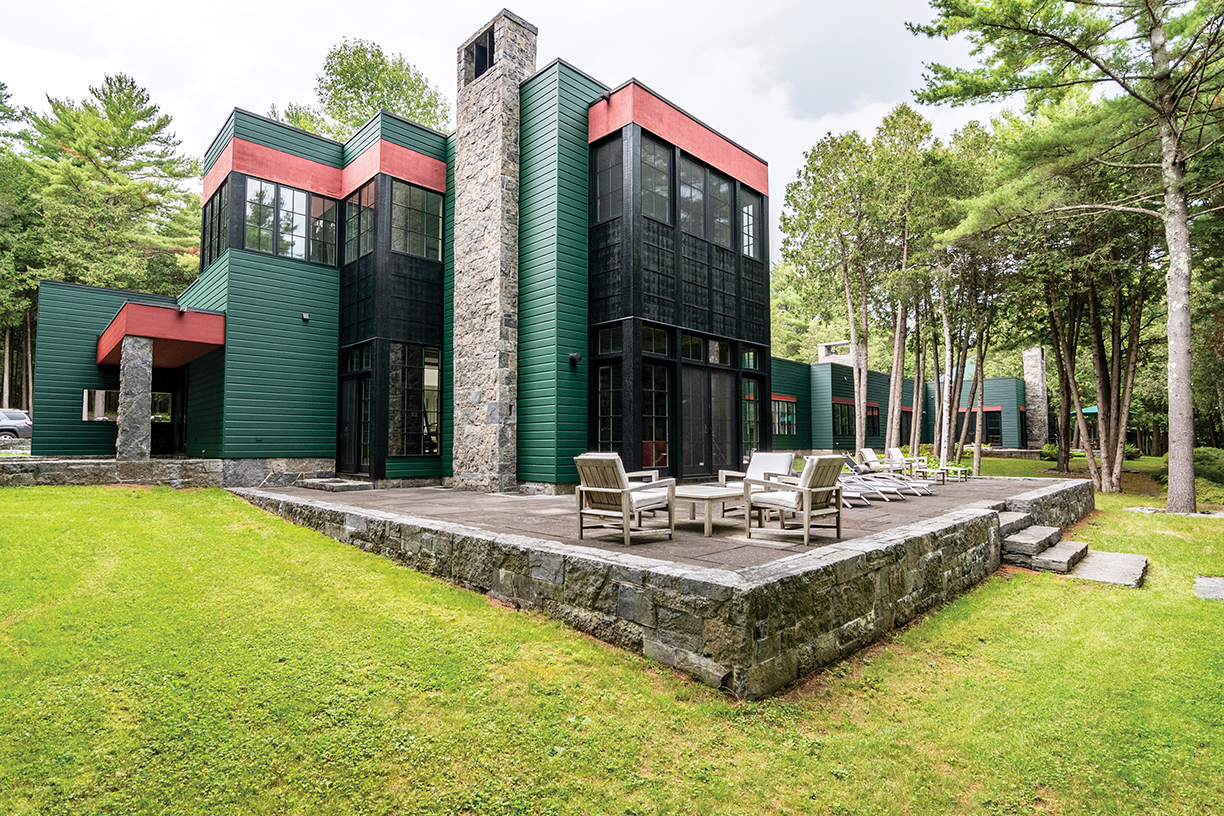
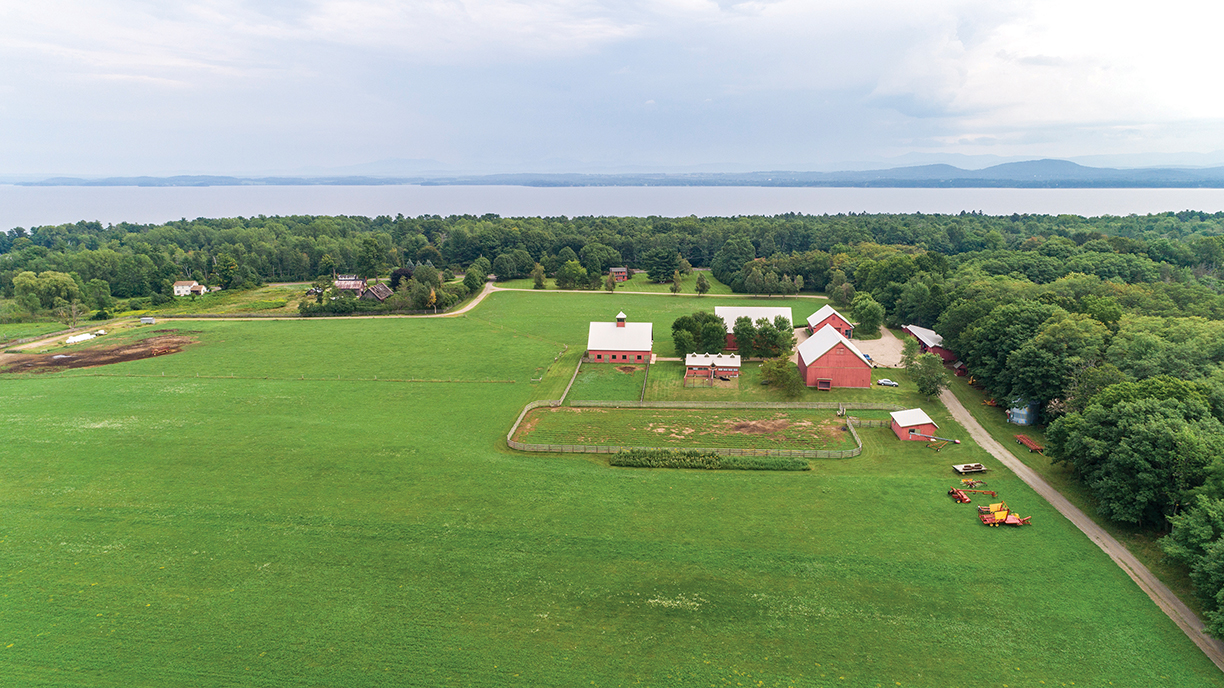
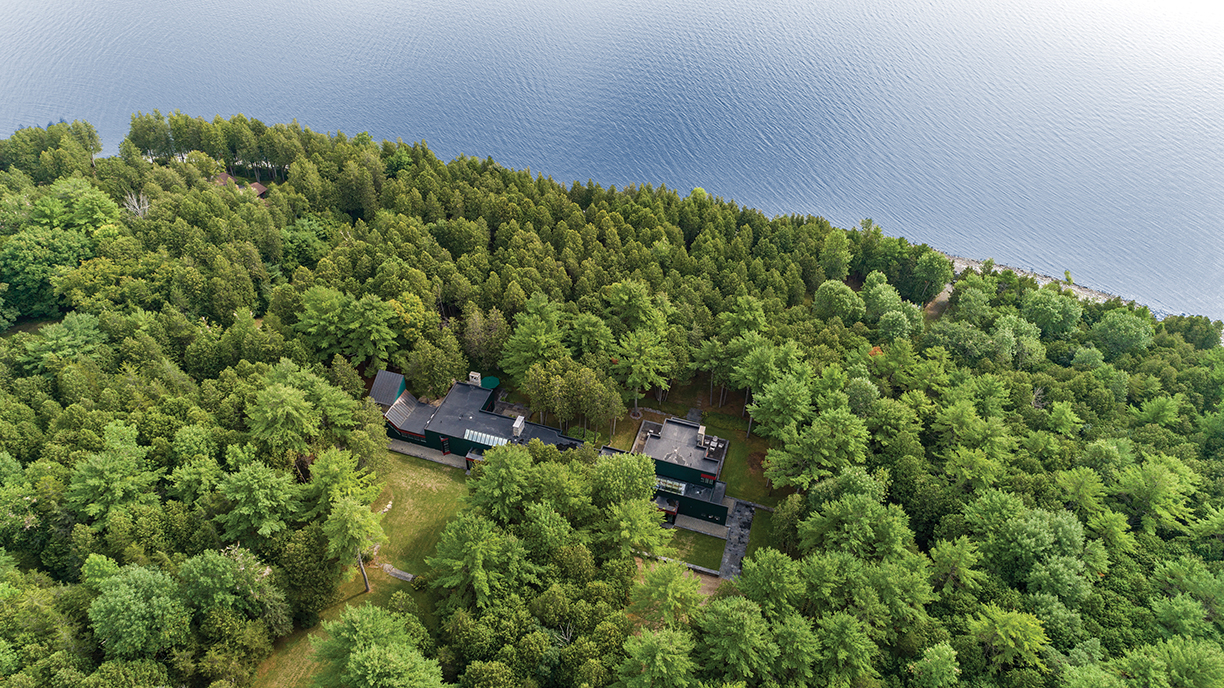
The property, listed for $9.5 million, boasts a totally renovated working 10-building farm, including a horse barn, hay barn, cow shed, a renovated year-round farm home, old slate gable roof barn and more.
It is even equipped with an underground water distribution system to the buildings, high speed internet, and a security system.
It is only minutes to the ferry to Vermont and includes a 2,000-foot grass runway for a serene and safe getaway.
To learn more about this proeprty, contact:
Margie Philo and Jodi Gunther
Berskire Hathaway HomeServices Adirondack Premier Properties & Adirondack Realty
O: 518.523.3333 C: 518.576.9840 Margie@adkpp.com www.adkpp.com
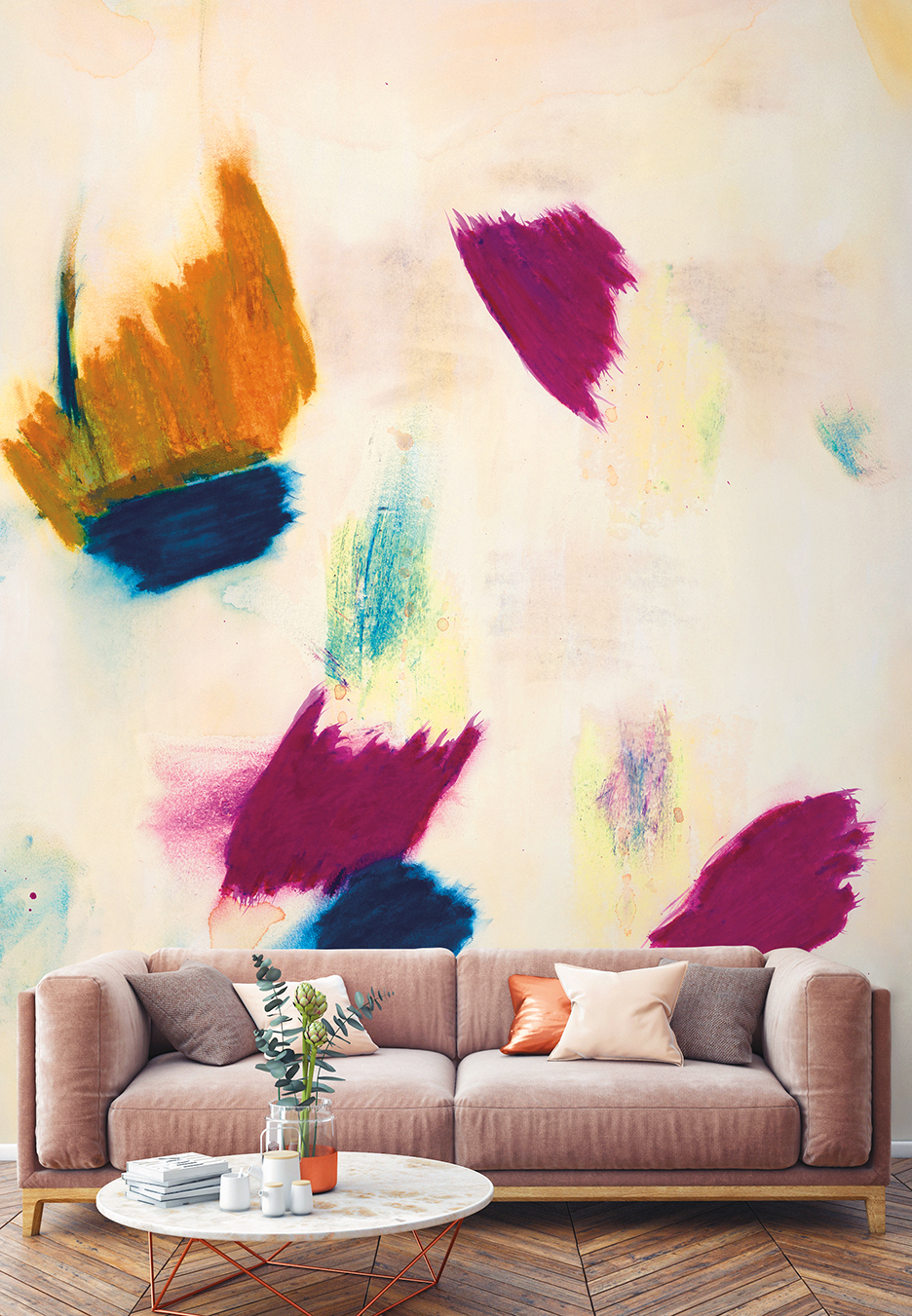
Arabella by Tempaper. Photo courtesy of Tempaper.
Penchants usually gravitate to the latest and greatest, but one tried and true material continues to be a magical catalyst for lifestyle.
Subtle or bold, classic or contemporary, shiny or opaque, wallpaper has evolved to be design’s magic wand — able to add pizzazz, lend a mellow undertone or inject just the right touch of coziness to any room.
Uniquely versatile, it enables consumers to fashion an interior that captures their individuality. It allows for unlimited customization as well as the creation of personalized living spaces, even adapting for children and pets without compromising on aesthetics. And for every budget from DIY to bespoke, there is a product.
“People want to LOVE their home. They want comfort and convenience, but do not want to sacrifice chic,” says San Francisco designer Jay Jeffers.
“There is a strong desire among consumers for original, authentic design that goes along with their vision for their house,” explains Joyce Romanoff, CEO of Maya Romanoff, a manufacturer of luxury wall coverings.
Ask designers about wallpaper and they invariably chorus, “it’s not your grandmother’s wallpaper,” a truism heard so frequently that it’s almost become a cliché. What is truly amazing is how much wallpaper ends up in homes today, adding a visual depth impossible to achieve with paint. Murals are back. So are individual walls showcased with a stunning texture or print.
And walls are only the beginning of today’s wallpaper story. “Trends indicate that the consumer is looking to personalize space through the creative use of wallpapers beyond the walls. Backings for bookcases, shelves, customized furnishings and ceilings all enter the realms of possibility.
While full room wraps, murals and feature walls still dominate the world of captivating designer installations, these small impact pieces allow for strong style statements without huge pattern or space commitments,” explains Carol Miller, content marketing manager for York Wallcoverings, a manufacturer with 125 years of innovation.
If the mention of wallpaper conjures visions of the flat, one-dimensional rolls common little more than 10 years ago, it’s time to refresh that image. “For many years wallpaper was something many of our clients avoided, but today, it is being rediscovered as an exciting way to introduce the color and patterns many homeowners are now embracing. And there are more wallpaper options out there than ever, thanks to advances in technology,” shares Elissa Morgante, founding partner of Chicago architecture and design firm Morgante-Wilson.
Dating back to decorated rice paper in China as early as 200 B.C., wallpaper has a long history that continues to evolve, with each century, each decade, adding innovations in materials, finishes, production methods and artistry. The most recent reinvention of wallpaper began more than a decade ago, but changes over the last few years have been especially remarkable. Old-school techniques such as block printing and silk screening continue, but the end result seems entirely new. Modern machinery creates precise designs, and new dyes impart richer vibrant hues. Diverse materials from wood and sand to crystals, shells, fibers, beads, even glass add depth.
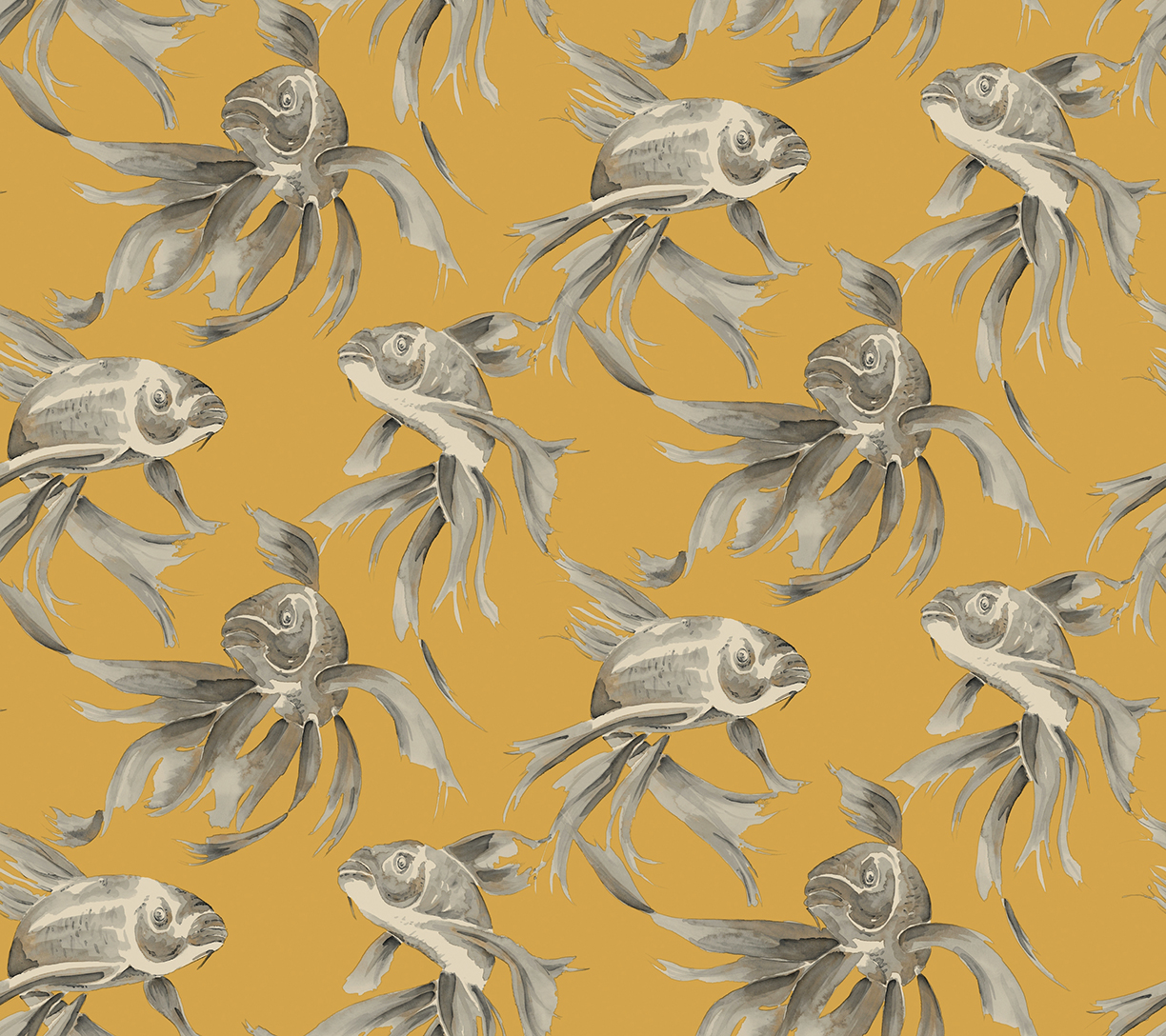
Left: Jewel Tones; Middle: Metallic; Right: Soft Organic
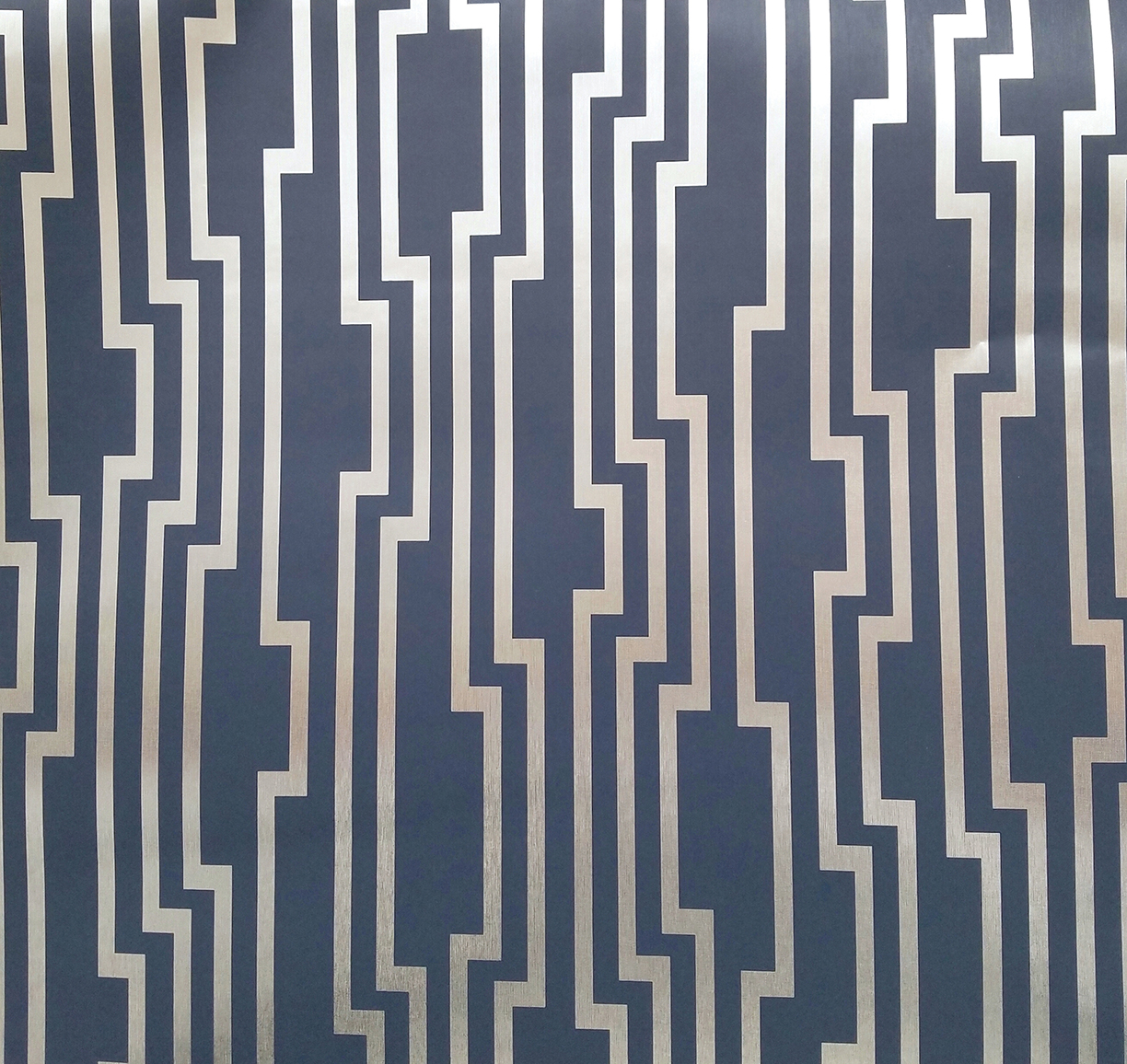
Wallpaper sample photos courtesy York Wallcoverings.
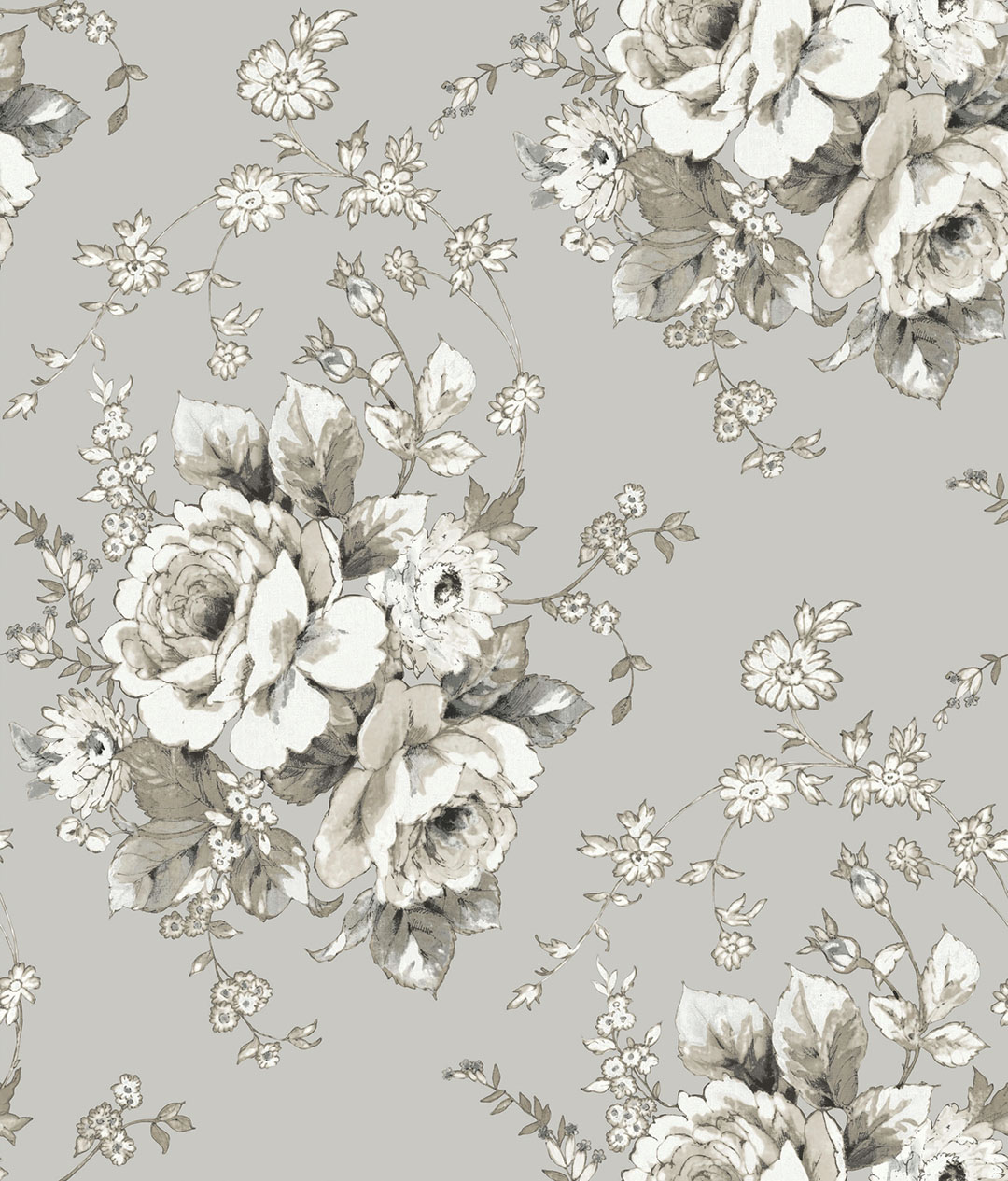
“Manufacturers can now digitally create the beautiful, luxurious look of expensive hand-painted or hand-blocked papers, or embed wallpapers with materials such as mica, glass beads, or even capiz shells to add interest and texture,” says Morgante.
“Over the last decade, we have diversified our product mix by expanding the types of materials we use. We have focused on making our processes more efficient, cost-effective and sustainable, while maintaining our handcraft and luxury appeal,” explains David Berkowitz, EVP of product development at Maya Romanoff, the largest manufacturer of handcrafted wall coverings in the U.S. Their gallery includes wool, burlap, silk and other natural fibers as well as precious metals and wood. Designs are often intricate, requiring an artisan’s touch. For example, papers in the precious metals collection often employ a time-honored method in which metallic leaves are hand applied to a paper backing with chopsticks. An ultra-modern topcoat prevents tarnishing or oxidizing, allowing for easier maintenance.
Textural papers continue to be in demand. The effect can be rustic or refined. In addition to traditional hemp, jute, sea grass, bamboo and raffia, grass cloth might integrate a variety of other materials. Additionally, says K. Tyler, partner and designer at Morgante Wilson, there are woven papers that look like linen on the wall or a variation of silk.
Schemes inspired by traditional designs (dare we mention chintz) have returned, but today’s execution is nothing like the dingy muted tones of yesteryear. Colors are vibrant, often using multiple shades of the same hue. Botanicals have also blossomed into an important trend, inspired by a growing passion for nature and biophilia. Look for splashy leaves and fronds or impressionist-inspired trees and flowers in soft tones. “I am also seeing a change from the crisp, bold large-scale patterns into a more abstract brush-stroked look. But with some of these styles, you’ll need to be aware you won’t have a side match, and each panel is distinguished,” says Christopher Grubb, president of Arch-Interiors Design Group in Beverly Hills.
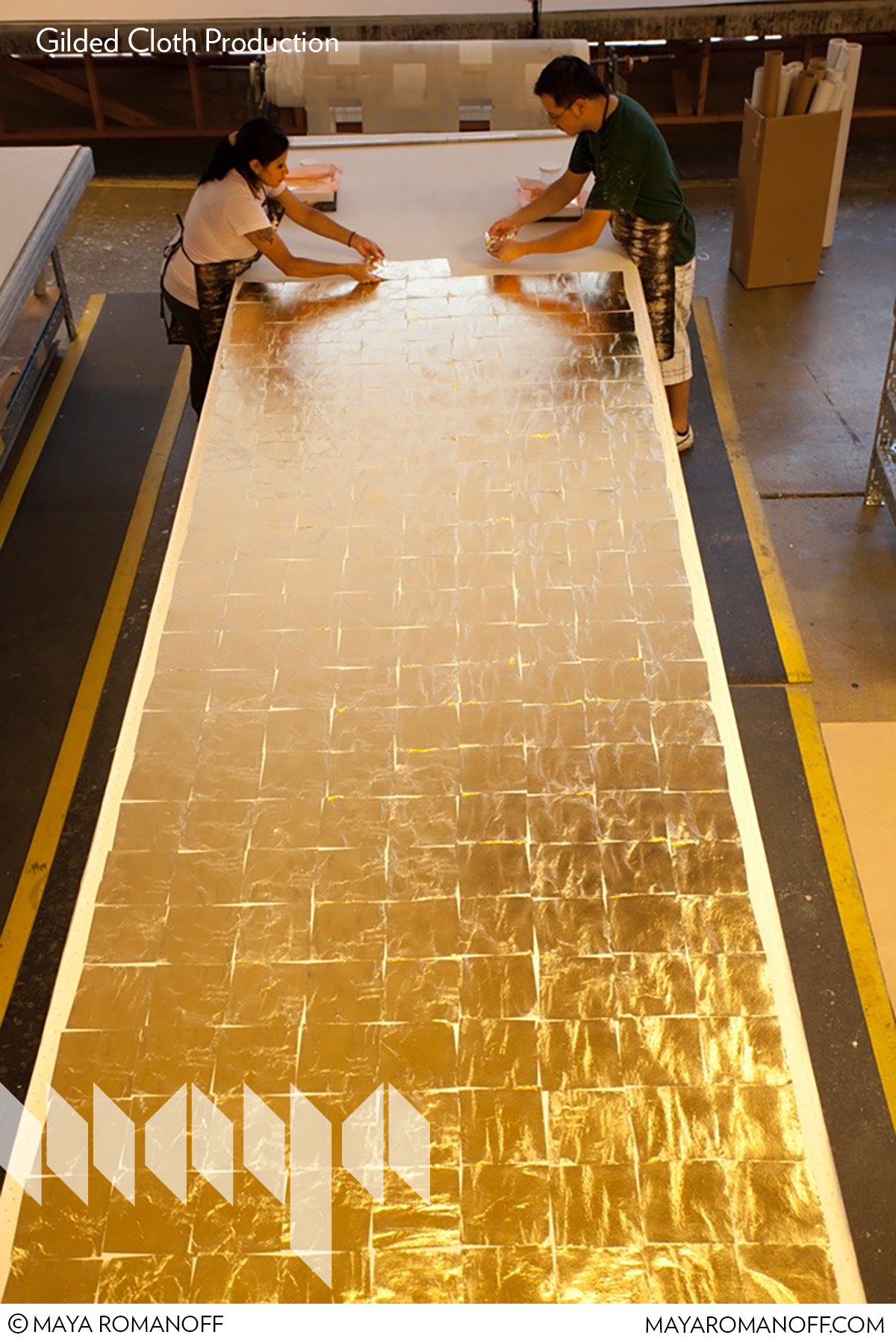
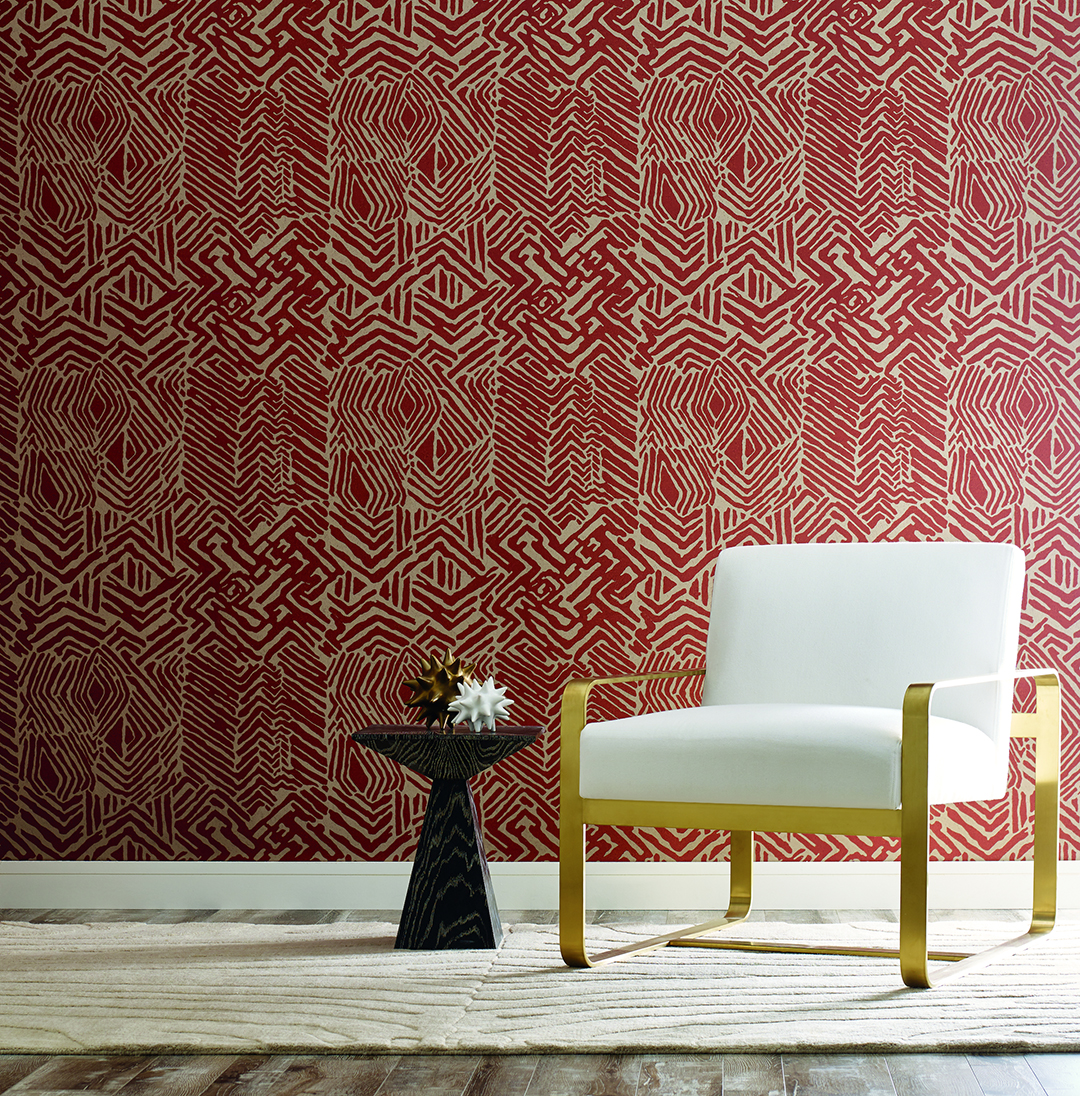
Top left: Precious metal inlaid; Top right: Hand-finished wood veneer, Ajiro Fanfare. Bottom: Tribal Print from Ronald Redding Handcrafted Naturals collection.
Photos of wallpaper production and sample by Maya Romanoff.
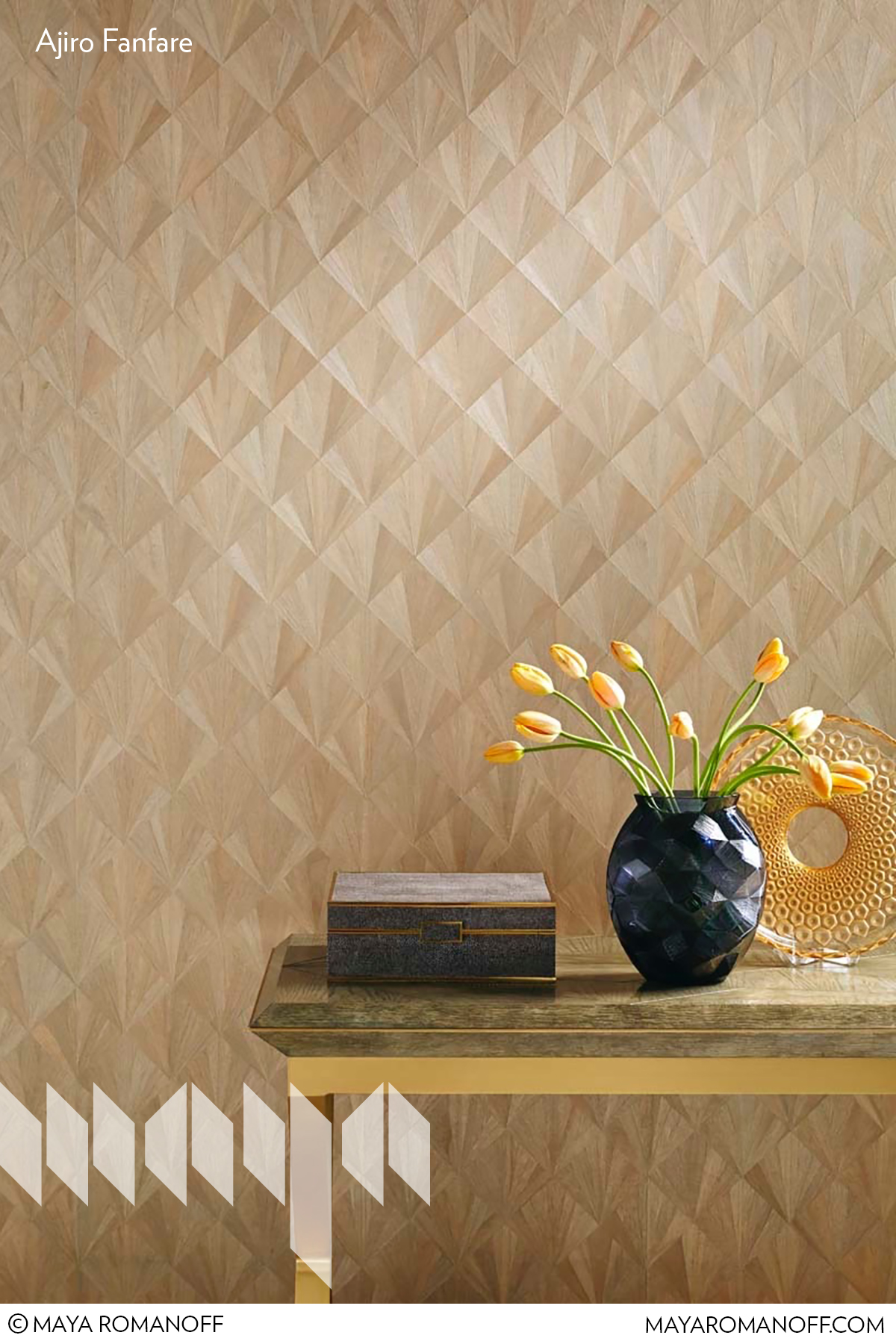
“There are so many things technology has allowed us to do today. We can do wall covering now that looks like the real material, but it’s made out of vinyl,” says Tony Sutton, owner of Est Est, Inc., an award-winning design firm in Scottsdale. Sutton illustrates with examples of wallpaper made from ultra-thin cork or micro-layers of slate. Additionally, he says, “I can take any photograph and then make a giant custom wallpaper out of it.”
Options today range from rugged vinyls to bespoke designs and hand-painted silks with prices that can exceed $1,000 a roll. “Vinyls are typically less expensive, but super durable. Many of them are rated for commercial use and sold in wider widths,” says Mondi.
“I am a huge fan of using vinyl wall coverings,” says Grubb, who does commercial as well as residential projects. “The color palette is enormous. There are silk and grass cloth looks, wovens, textures and embossed patterns. It’s incredibly durable and easy to maintain.”
“On the other end of the spectrum, you would find hand-painted wall coverings. There are custom made, high-end and truly artisan products that typically replicate a faux finish or mural. In between is where most wallpapers reside. Digital printing is typically very affordable and can often be done on different background materials,” says Mondi.
Design is only part of what consumers want. Sustainability and ease of use are equally important. Upmarket to DIY consumers demand sustainability, which includes efforts to minimize the footprint of manufacturing, observes Miller. Beyond no VOCs, ozone-depleting chemicals or cadmium or mercury, York Wallcoverings also uses water-based inks and coatings and smokeless, non-polluting inks. Additionally, there is a push toward sustainable materials, including cork, natural grasses, leaves, wood veneer, even glass beads made from recycled windshield glass.
Ease of Use
“Now every level and type of wallpaper concerns itself with ease of application and removability,” says Miller. “Even nonwoven unpasted backings used most often by designers remove in full strips.”
A potential game-changer for the industry came with Tempaper, which has revolutionized the concept of peel and stick papers. There is nothing stodgy about these designs, which run the gamut from traditional classics such as chinoiserie to glam to bohemian. They also tap into creations by well-known designers such as Bobby Berk and Genevieve Gorder. The company also offers panels and murals as large as 8 feet by 10 feet. Some designs such as Arabella, part of the Zoe Bios collection, are inspired by artists such as Jean Michel Basquiat.
Founded by twin sisters Jennifer Matthews and Julia Au, Tempaper is an ideal solution for someone renting, as designer Jewel Marlowe discovered. “Recently we rented a high-end beach home in Jamestown, Rhode Island, for 10 months. This was just long enough that I wanted to add some personality to some of the spaces in order for it to feel like home. However, I was very aware that whatever I used needed to be quickly removable. Luckily, I found some beautiful Tempaper designs to personalize and beautify some of our rooms,” she shares.
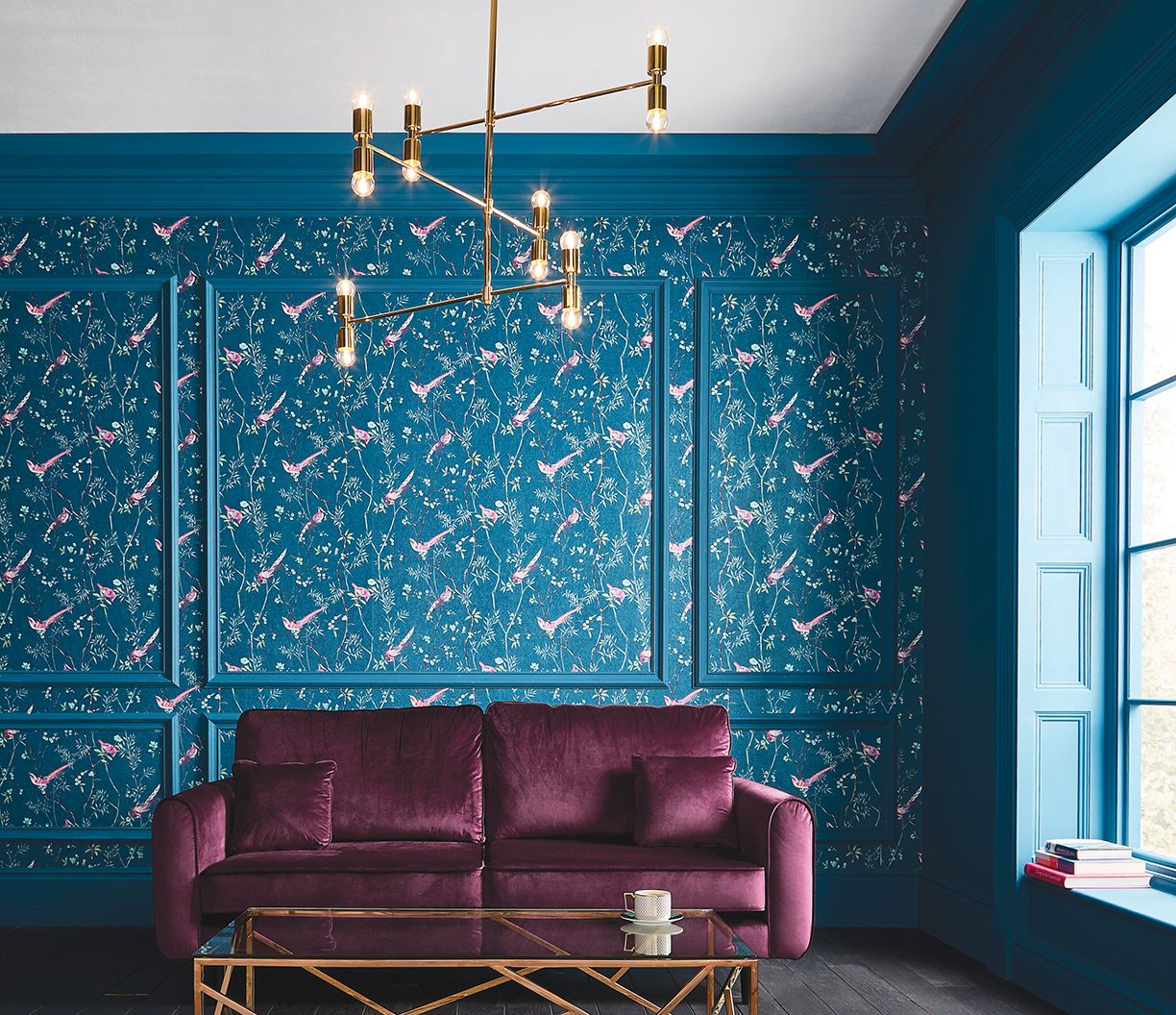
Birds are flocking to wallpaper this year. Graham & Brownexpresses this theme in Tori Teal.
Photos courtesy of Graham & Brown.
New additions to Tempaper’s line up include designs from Wright Kitchen and holographic decals from Bobby Berk. This year, the company also introduced a collection of vinyl floor rugs.
Tempaper does seem to add a “now you see it, now you don’t” ability to wallpaper’s extensive resume, making it a truly magical material.
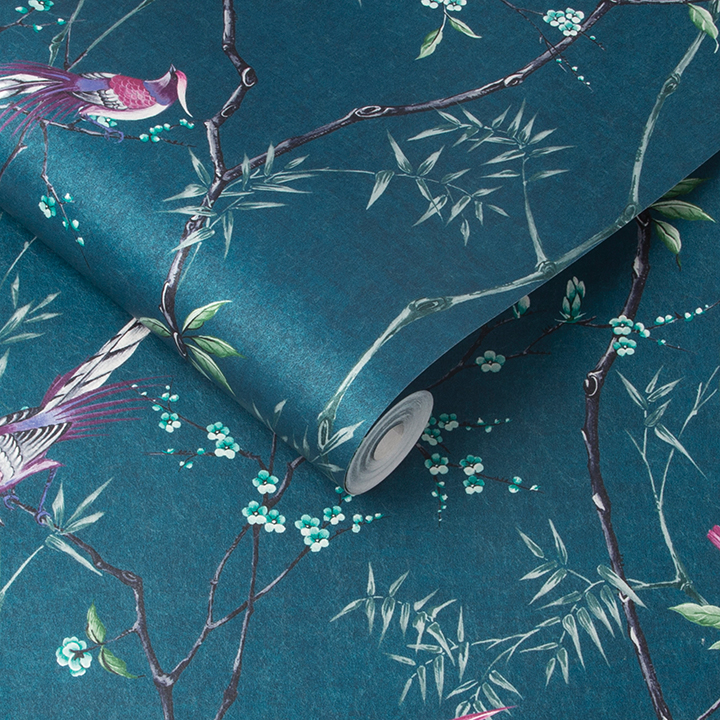
Zany patterns. Punchy palettes. Combinations of materials from the concrete to metallic.
As Claire Elsworth of Claire Elsworth Design notes, the eccentric spirit of Maximalism is both magical and rebellious. It encourages traditional rules of design to be broken and conventional boundaries to be overstepped. From patterned wallpapers and dark paint to a velvet sofa with an eclectic mix of textures pillows, the goal is to be courageous in your design, and to love the “more” aesthetic.
“‘More’ is a love and appreciation of pattern, color, collection and curation,” Elsworth notes, “with a sheer joy of fusing, contrasting, styling and layering all that gloriousness together.”
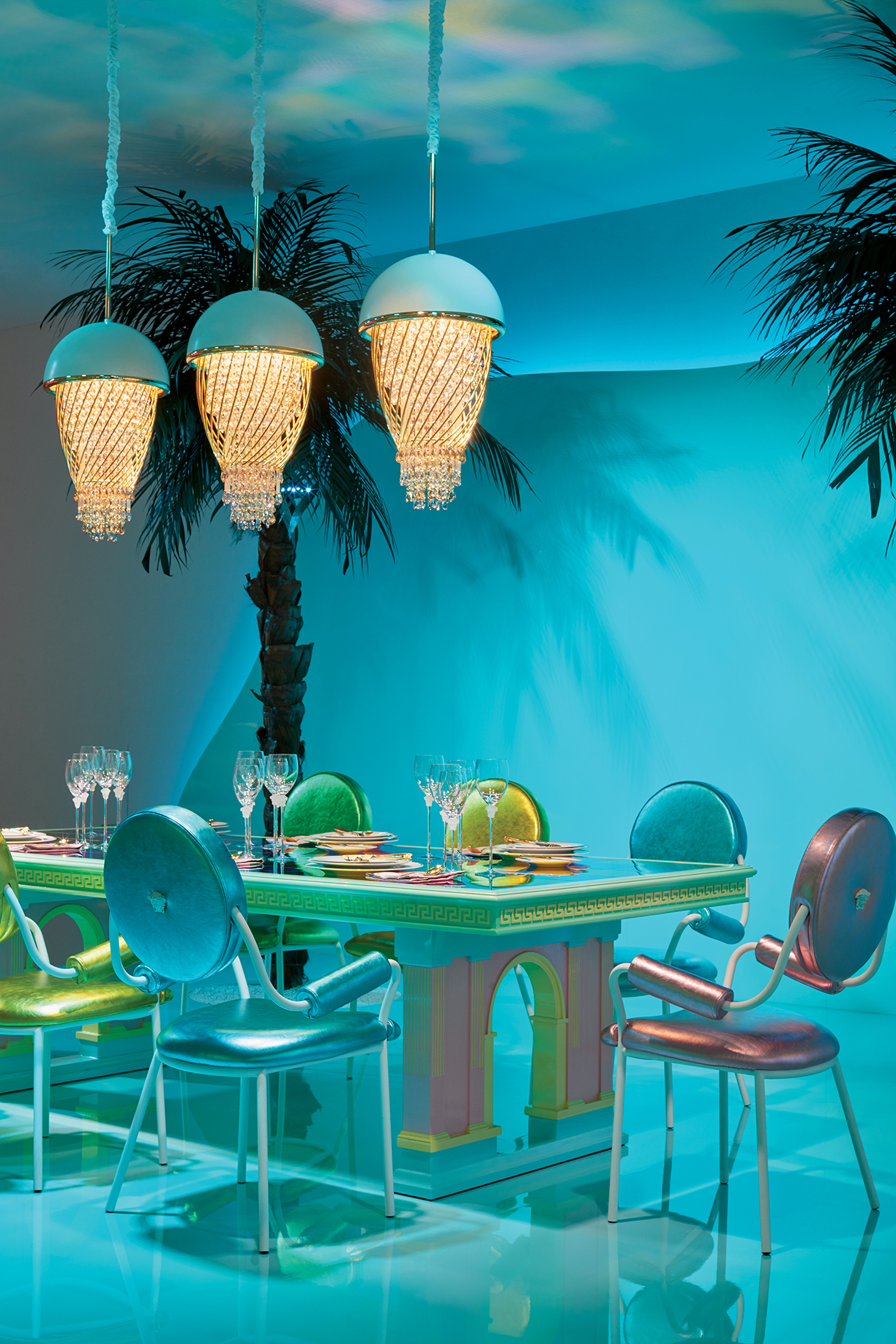
Sasha Bikoff
Photos courtesy Sasha Bikoff.
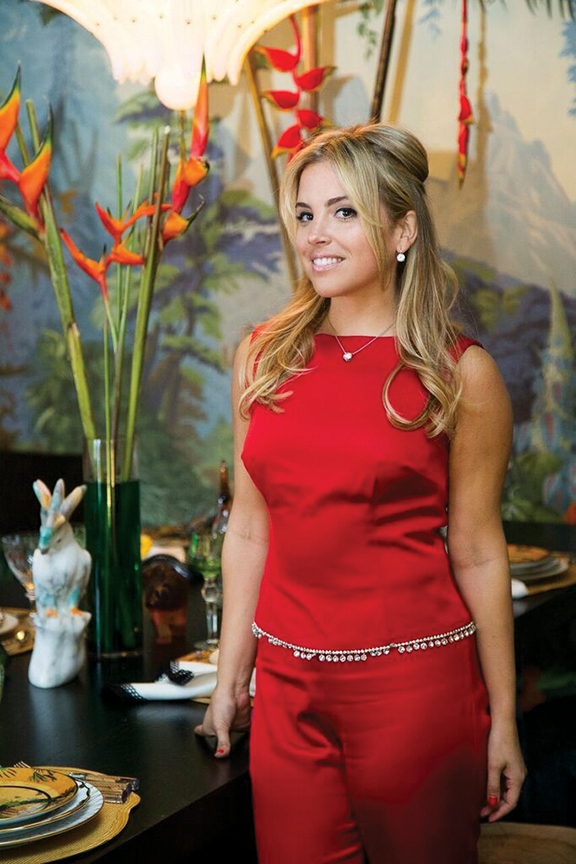
Maximalism has been embracing “the more” of design since the 1980s with the creation of Memphis Milano in the 1980s, a legendary postmodern design group that championed the style and made it a staple in the industry. Author and design journalist Claire Bingham notes in her book, More is More: Memphis, Maximalism and New Wave Design, that after experiencing the “riot of color and pattern” indigenous to styles like Memphis, the 90s saw a rise of Minimalism, a stark contrast with designers such as John Pawson and Calvin Klein focusing on purity and simplicity.
“There has always been minimal versus maximal throughout time, but the rise of the Memphis/80s style was a kickback from the elegance of mid-century design and a desire to rethink how objects could look,” Bingham writes. Although minimalism has been an ever-developing presence in today’s world, the Memphis style and Maximalism as a whole has found its way back into the hearts of young impressionable designers looking to become expressive in a more vivacious, free-spirited way.
In More is More, Bingham spoke with a host of contemporary designers, as well as Peter Shire and George Snowden, some of the original founders of the Memphis group, who truly embrace and understand the spirit of Maximalism. “It’s not so much to do with a style,” she says. “Maximalism could look like anything — romantic and frilly, graphic patterns, disco … It’s like playing dress up for the home.” To quote the vivacious Iris Apfel, “more is more and less is a bore.”
Famed New York designer Sasha Bikoff was dubbed the “interior designer for the young and wealthy” by The New York Times. Bikoff affirms that she was at the forefront of Maximalism’s revival when she started her firm seven years ago, a revival she credits to the growing millennial culture. She says that like anything in history there’s an action and a direct reaction. Instead of creating simplistic looks that can be easily replicated for the masses, younger designers and people want to create spaces and live within spaces that are unique, that share a likeness of themselves, a desire that has stemmed such creative outlets as Instagram, Pinterest and other social media channels.
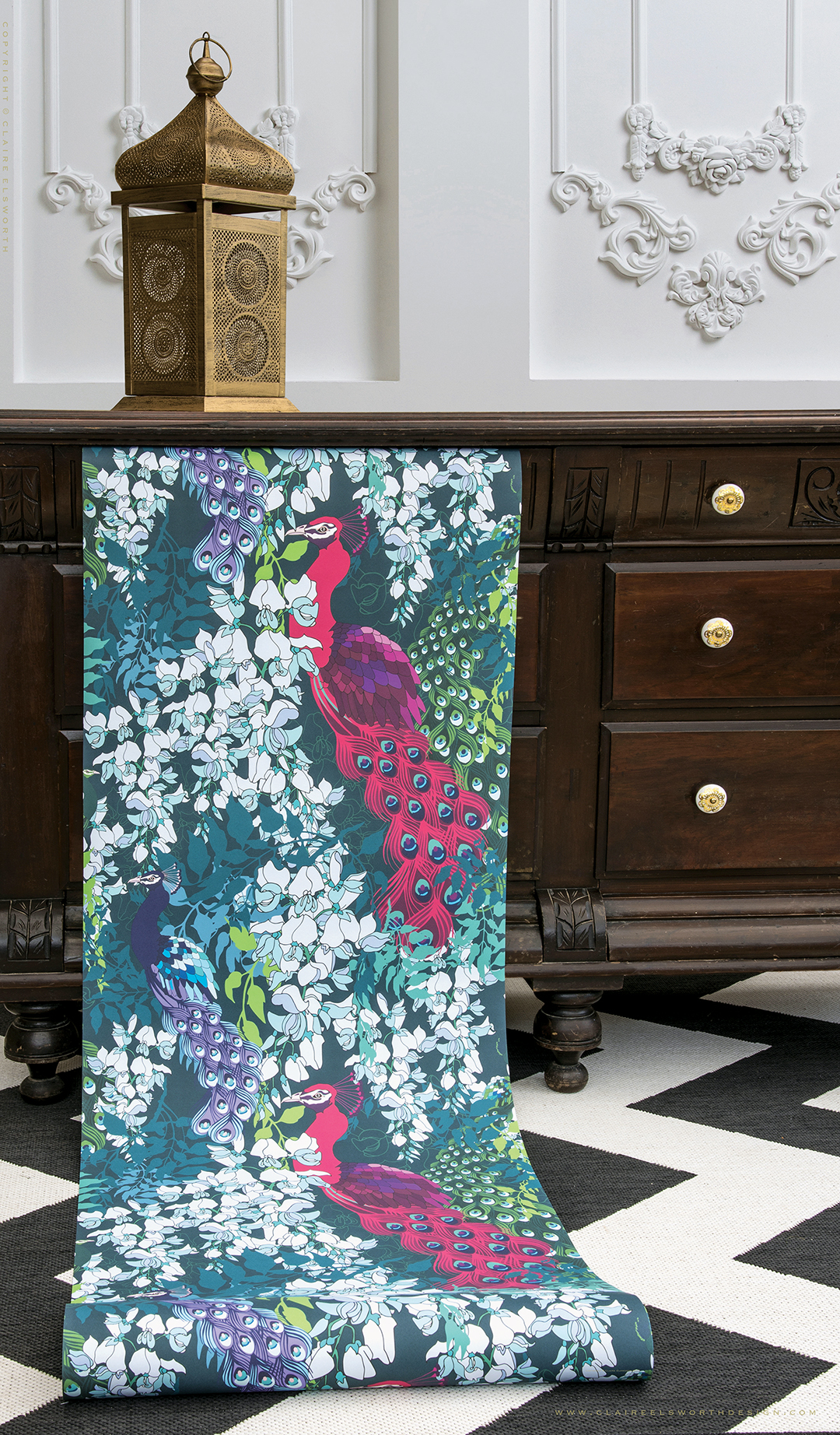
Claire Elsworth
Photo courtesy © Claire Elsworth 2017
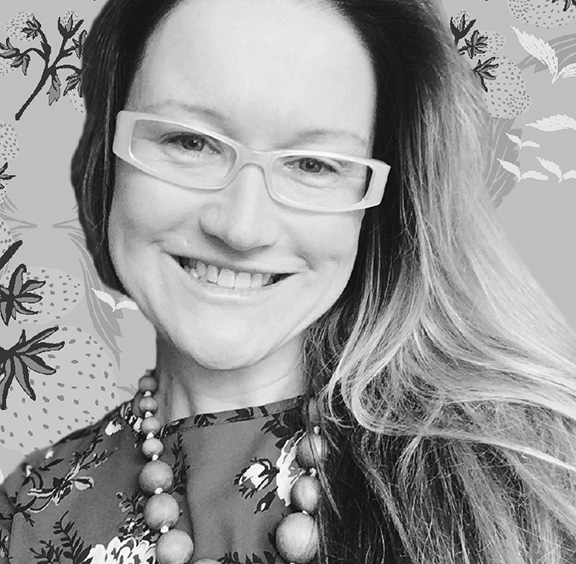
To heighten the effectiveness of Maximalism, Bikoff says that one of the most important aspects of this style type is the use of color, noting that in her own designs color helps bring out an emotional response. She notes that it’s important to surround yourself with colors and objects, patterns, and textures that make us happy and bring life into your home. “The same way I dress with fashion — as my fashion choices are bold and confident — is how I want my rooms to feel,” she says.
Just like personal fashion, each Maximalist designer and design is different and based on both creative taste and what each designer finds inspiring. For example, Bikoff’s aesthetic can be derived from 18th-century French Rococo, 1960s Space Age Modern, 1970s French Modernism and 1980s Italian Memphis Milano. An affinity for new experiences, her love of travel helps add to her ever-developing color palette, which you can see in her projects. “Marrakesh is a place I travel to all the time, and the colors of the spices you find there are so amazing you can see them all in a color palette, from bright turmerics to smoky paprikas,” Bikoff says.
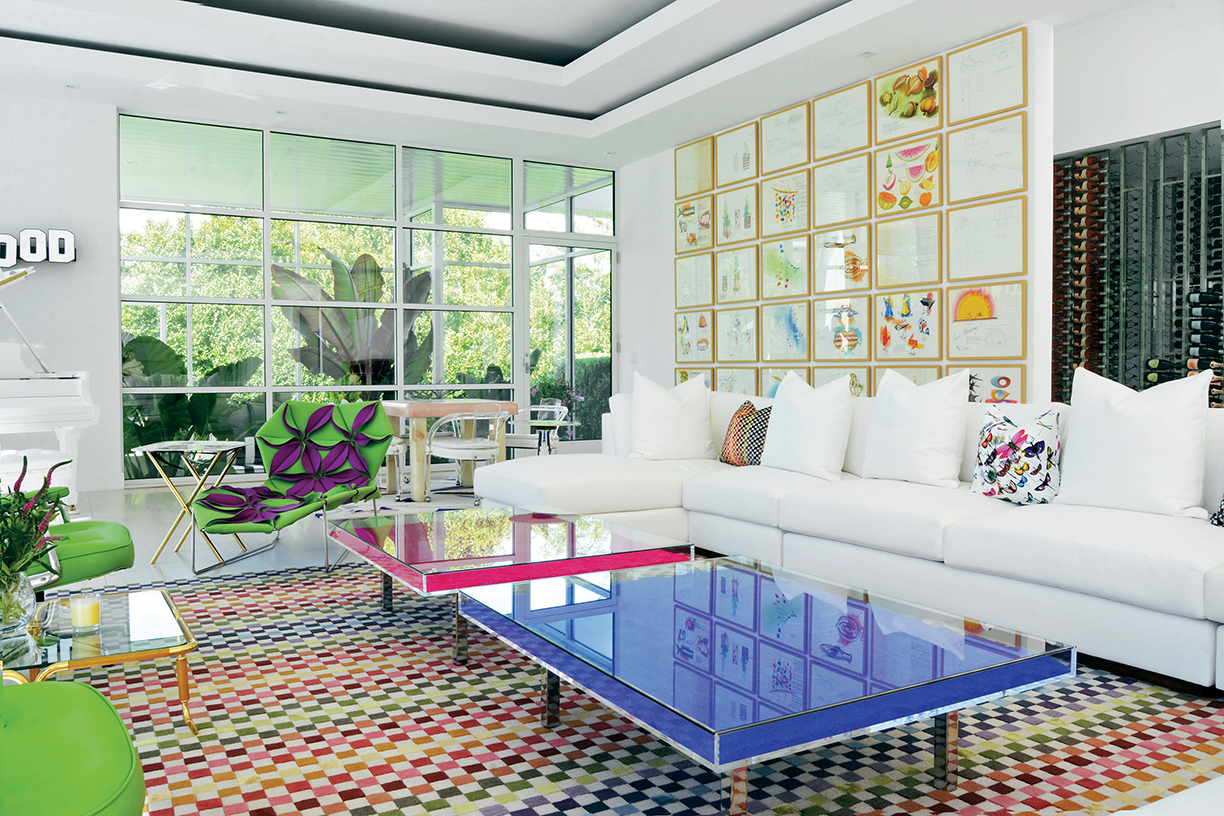
Photo courtesy Claire Bingham.
Elsworth’s firm focuses on luxury wallpaper and home décor, and is known for intricate yet bold Maximalist features in every design. She hand sketches her designs, which are inspired by her short concept stories about an imaginary Duchess called Violacea Macrobothrys and her beautiful old aristocratic house — “a Maximalist treasure trove paradise!” she says. These stories weave through six collections of wallpapers and cushions, displaying both Elsworth’s love for drawing as well as her favorite aspects of Maximalism.
“I’ve always been drawn to anything ornately detailed, whether it be textiles, interiors, art, or historical architectural details,” Elsworth says. “So, I was naturally drawn to the Maximalist style long before I even knew there was a name for it.”
To embrace Maximalism in an everyday space there is a variety of ways one can incorporate aspects of the style. Bikoff says that some of the best Maximalist interiors are just showing off pieces from trips you’ve taken all in one space, even if they do not particularly go together. “The whole idea of Maximalism is that it’s the kind of space for a true collector, a space that tells a story.”
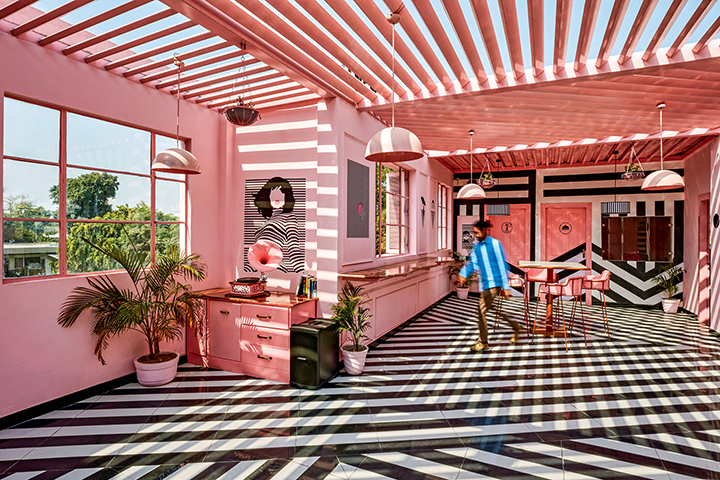
Photo courtesy Sasha Bikoff.
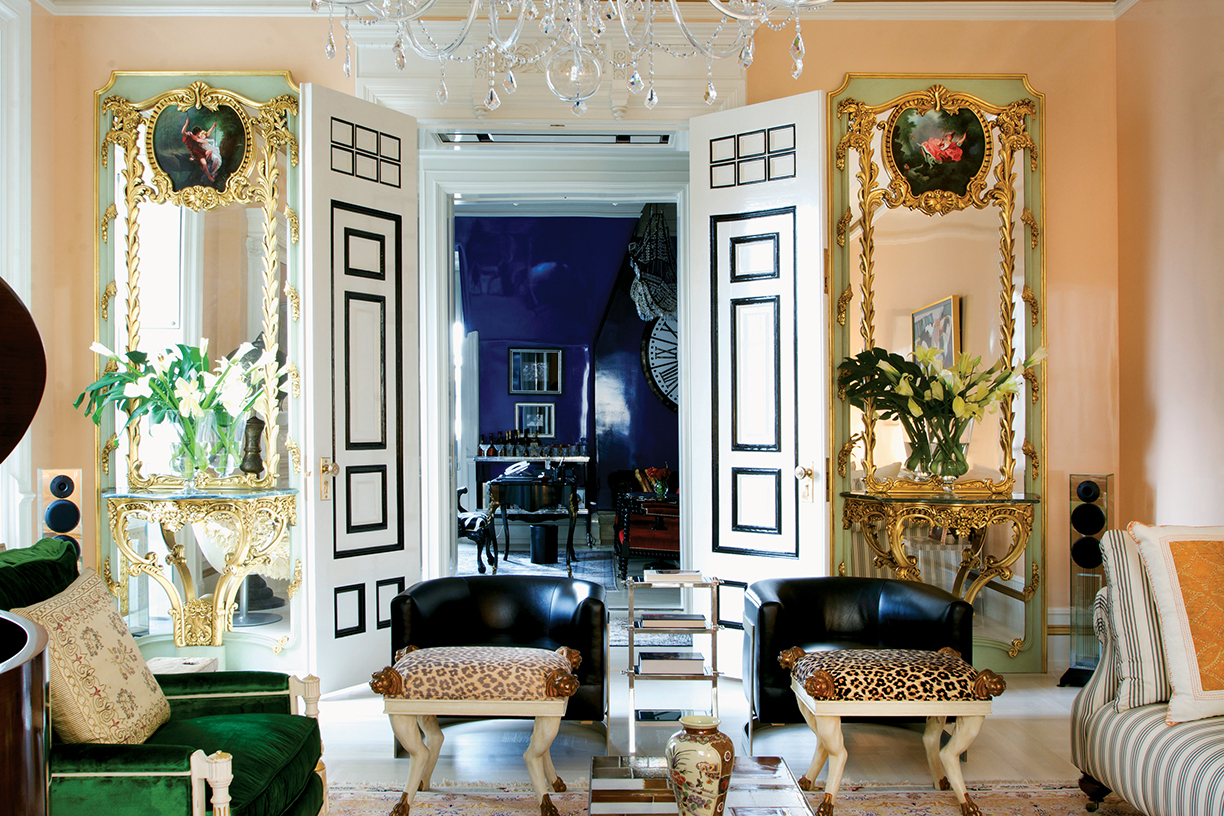
Photo courtesy Claire Bingham.
With summer in full swing, vibrant colors and shining sun make spending long days outdoors a treat. Nature’s textures, sights, and patterns boost your mood and energy, enhancing the feeling of a perfect summer day. Why not bring the outdoors in, and create your space to enjoy a summer state of mind all year round?
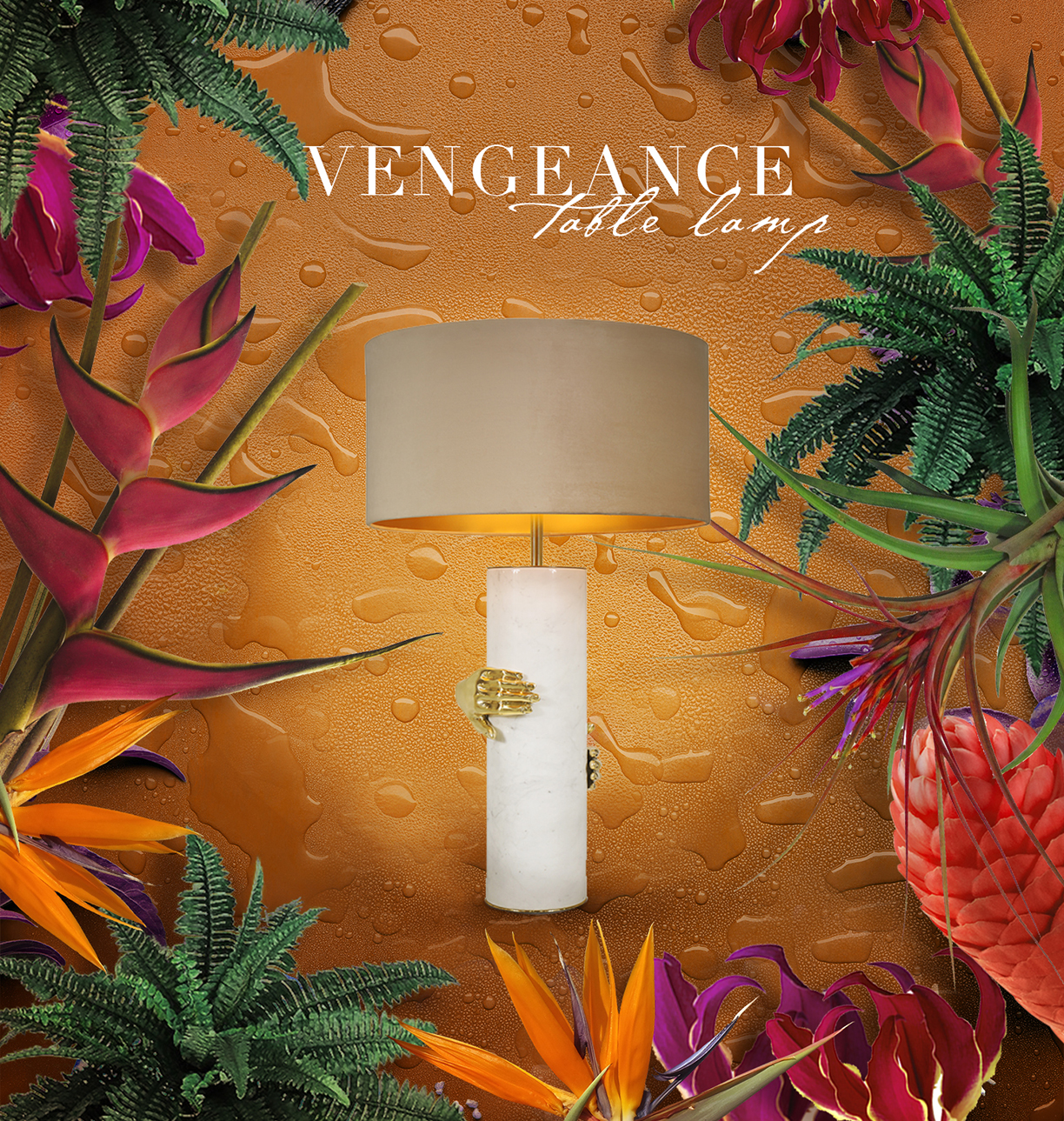
Koket’s artistic and product designers have crafted summer decor perfect for creating an indoor retreat. Forget minimalism, Koket says to go big and go decorative for a maximalist approach to pattern, color, texture, and accessories.
Incorporating natural materials, such as the classic white marble in Koket’s Vengeance Table Lamp, are a perfect way to capture pieces of nature. The shape of the golden hand on the lamp also adds unique flair to the piece.
The vibrant colors of the Seville Pouf from the KK by Koket collection make it a fun, playful accent seat that is sure to add a summer feel to your space. Next to the swirling curves and glass top of the Kiki Side Table, this set-up is the perfect destination for enjoying a summer cocktail.
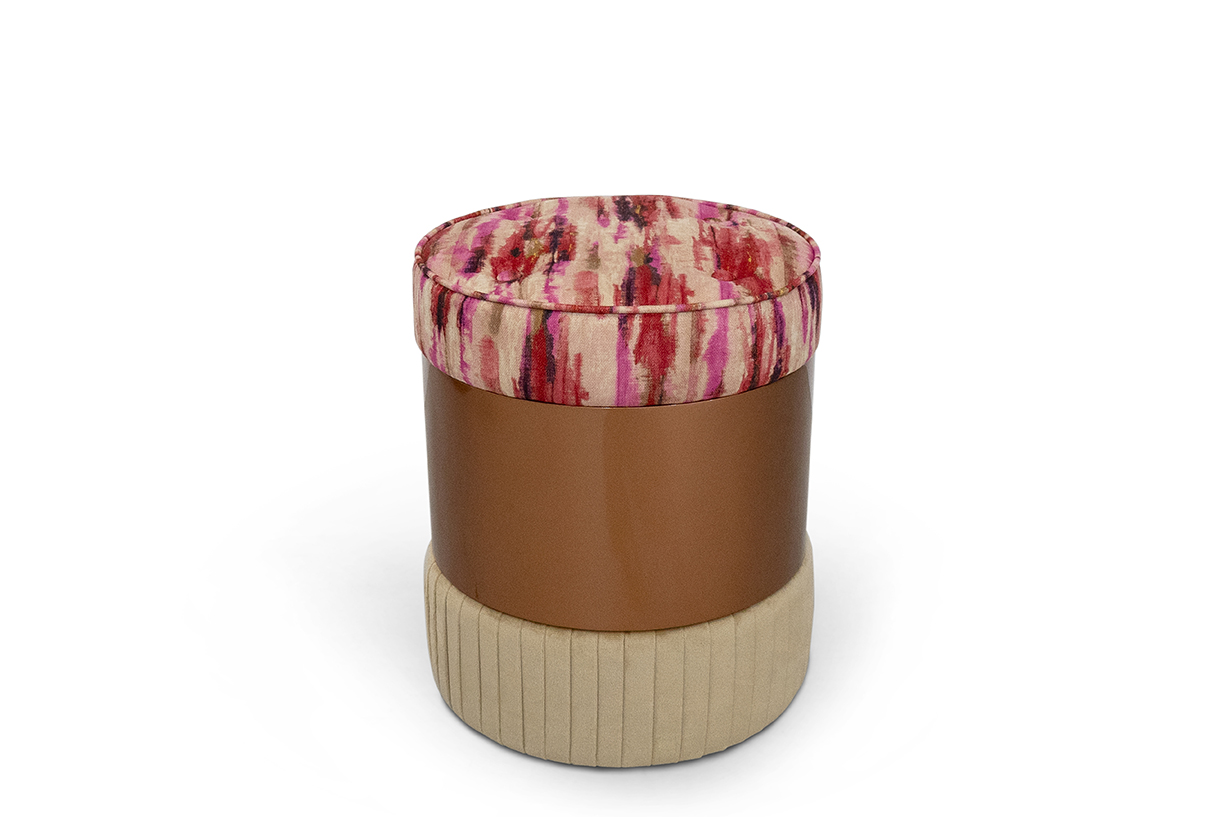
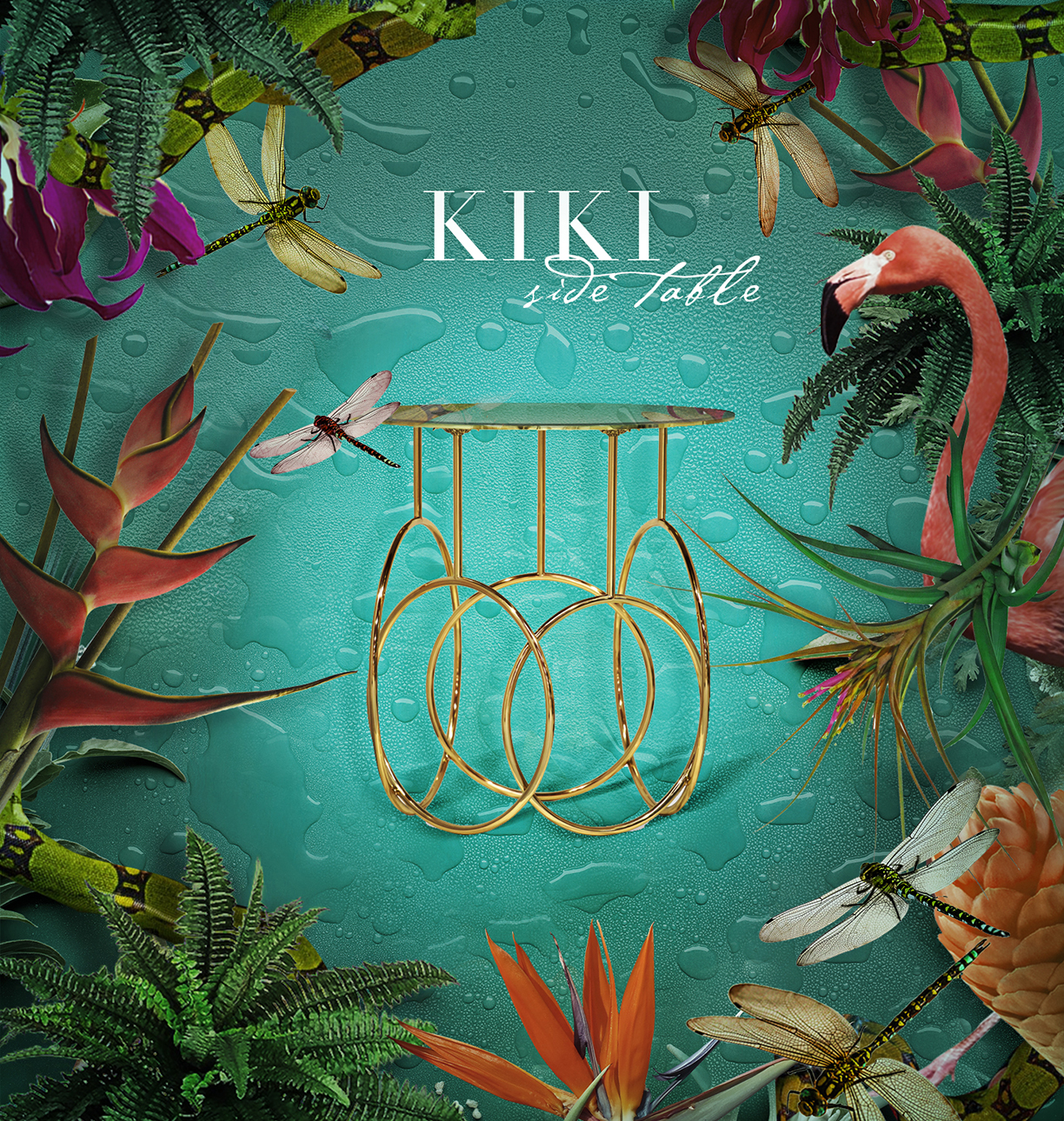
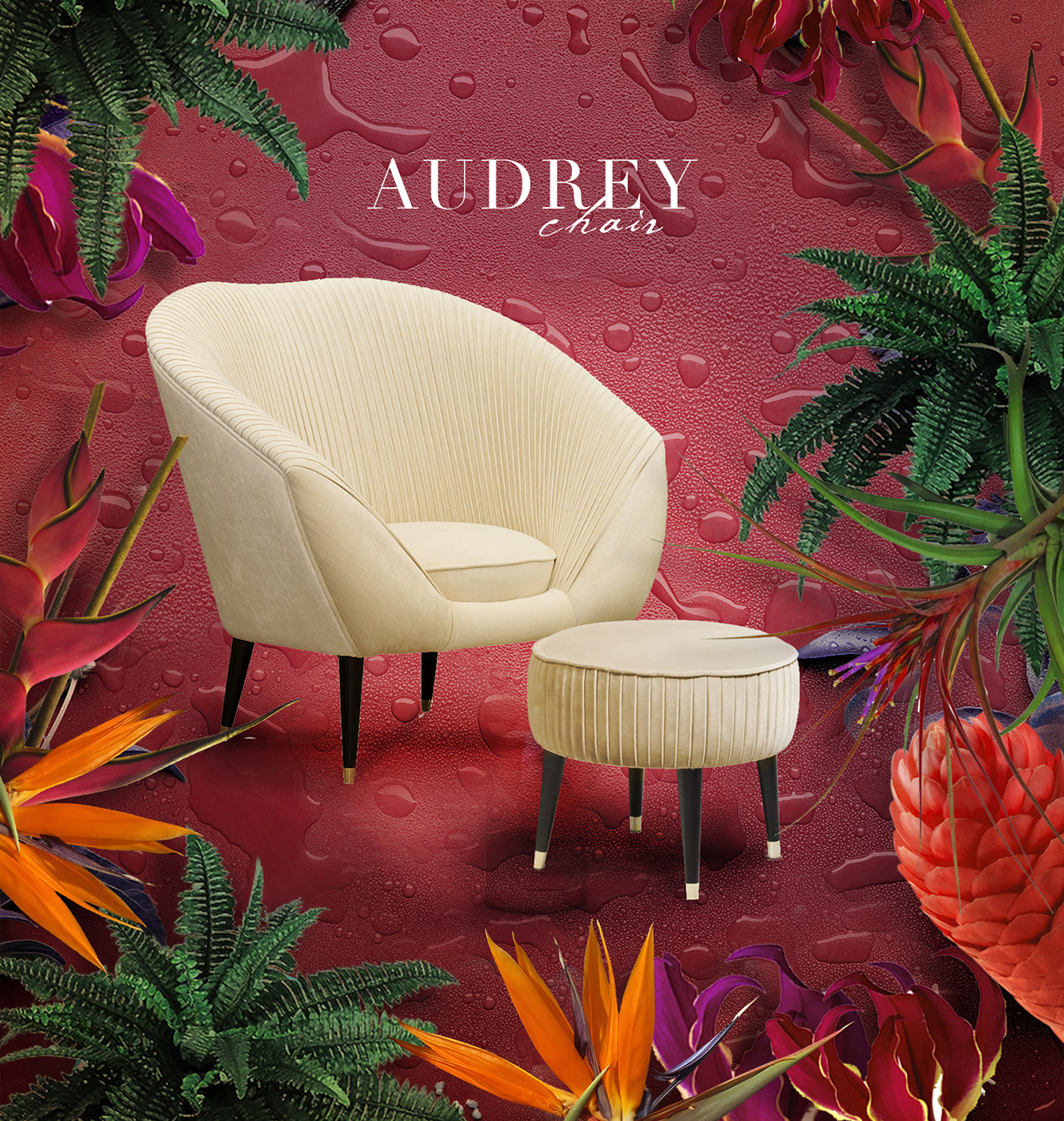
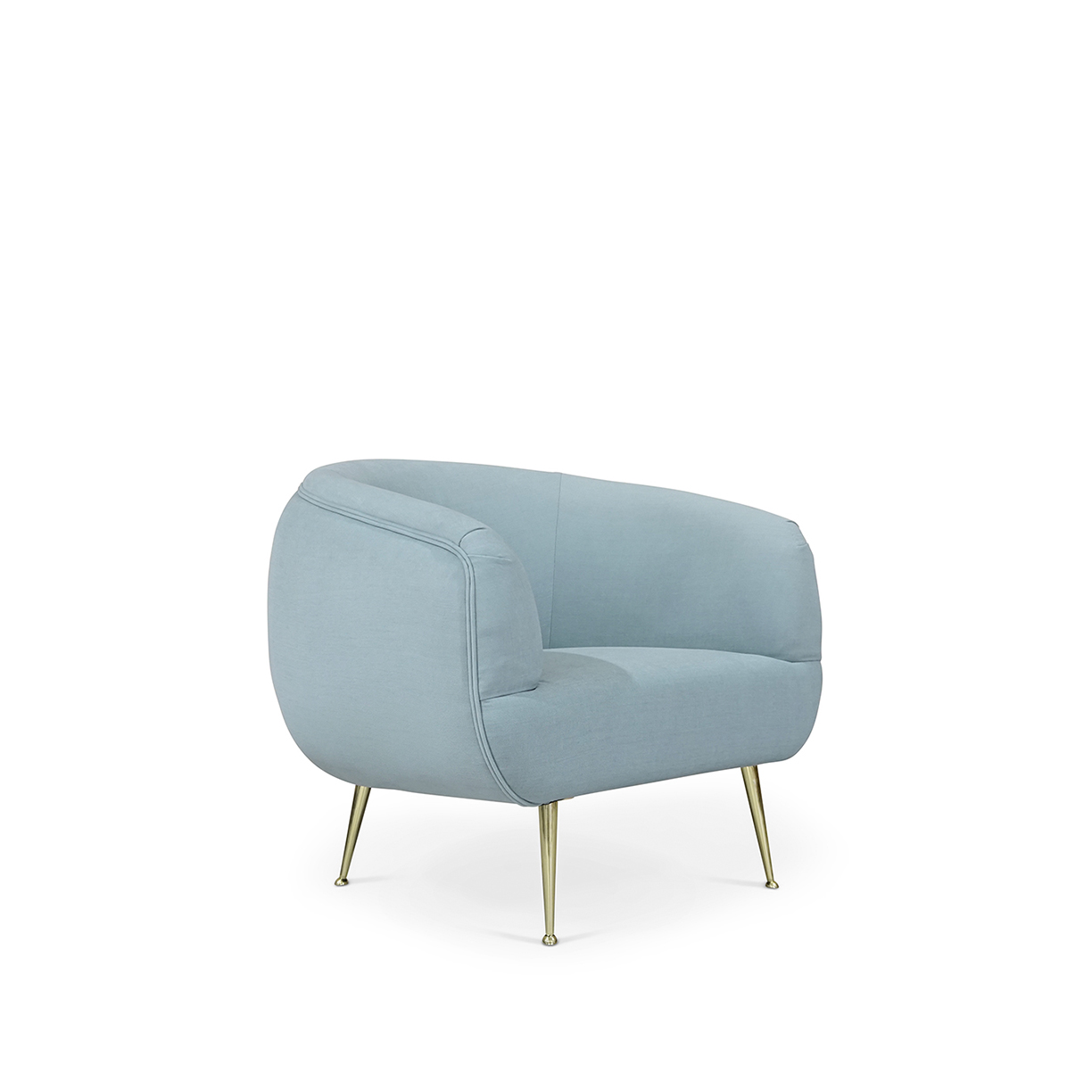
Curling up in the cozy Koket Audrey Chair in your favorite reading corner will make you feel like you are enjoying light summer reading on your favorite beach. Or, bring some of the outdoor summer sky indoors, with the uplifting sky blue color of the Tayma Chair from the KK by Koket collection.
Exotic animal touches can help your space get in touch with the great outdoors. A perfectly placed, subtle piece of exotic decoration will make a statement in your home. Koket’s Serpentine Collection adds allure and glamour to any space, such as the Serpentine II’s apple-shaped mirror or Serpentine Chandelier. Feathers also add a one-of-a-kind, soft touch to pieces. Koket’s natural feathers are combined in patterns of waves, natural stripes, and diamond crisscross, and are available by the panel or as a finish on numerous furniture designs.
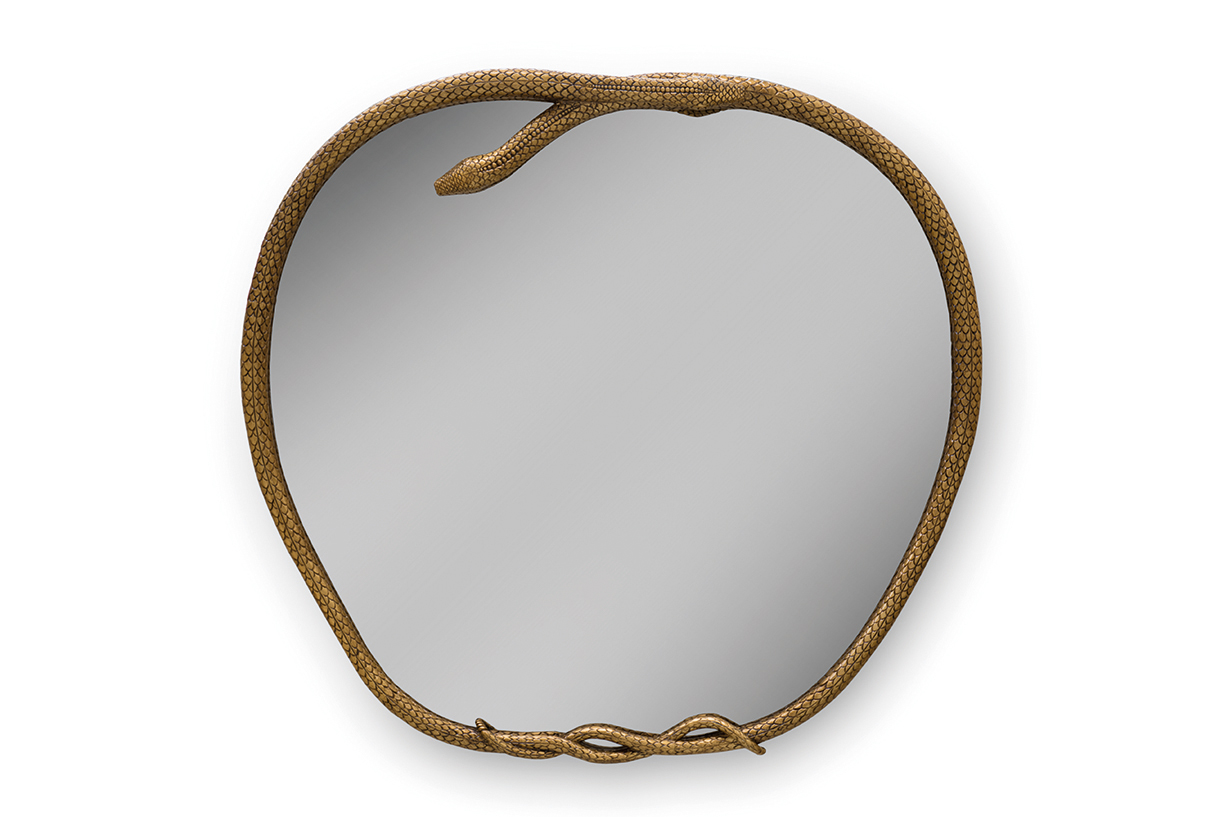
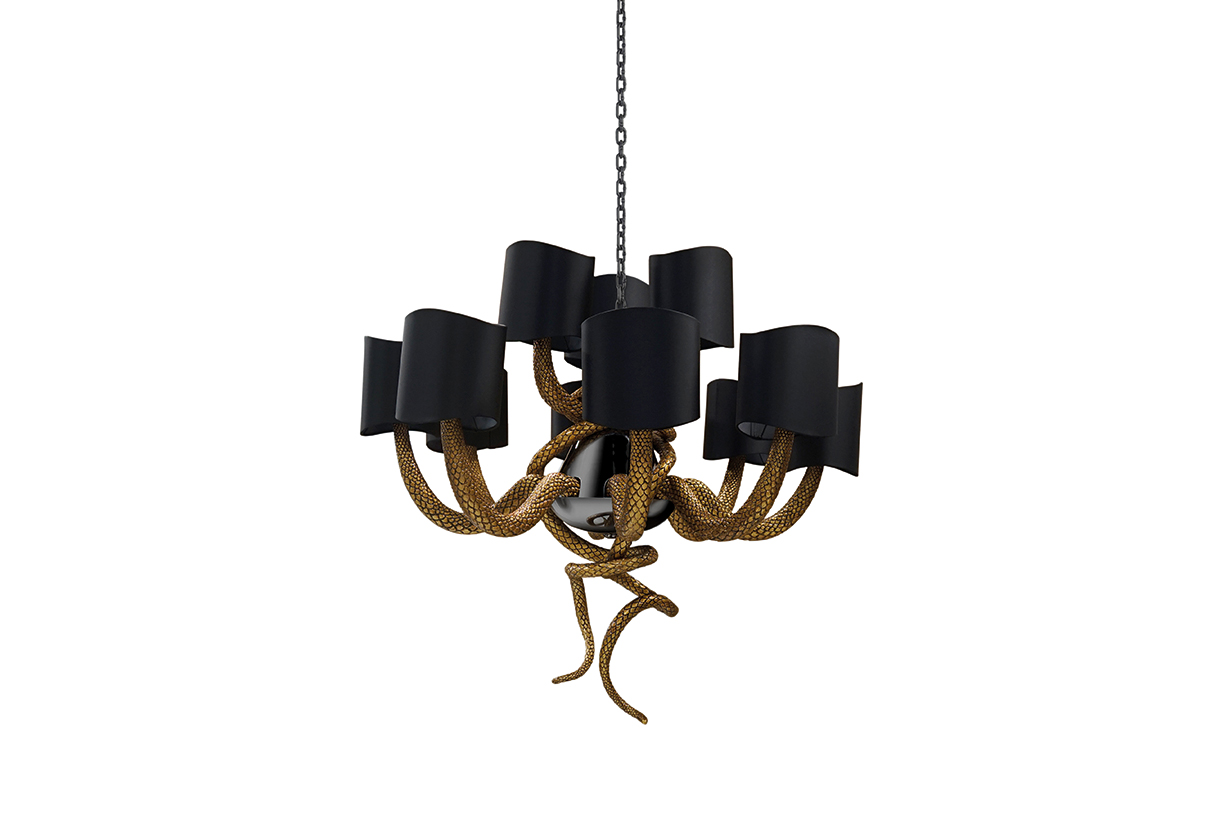
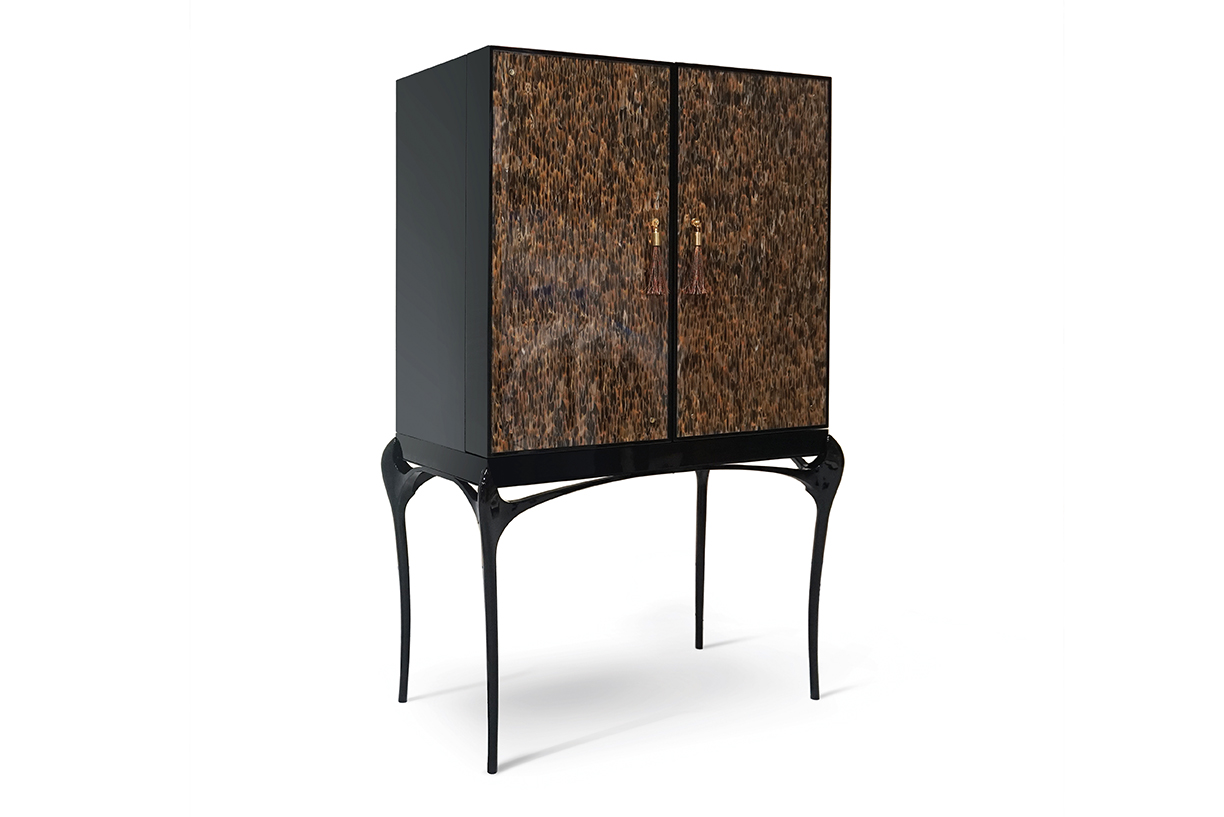
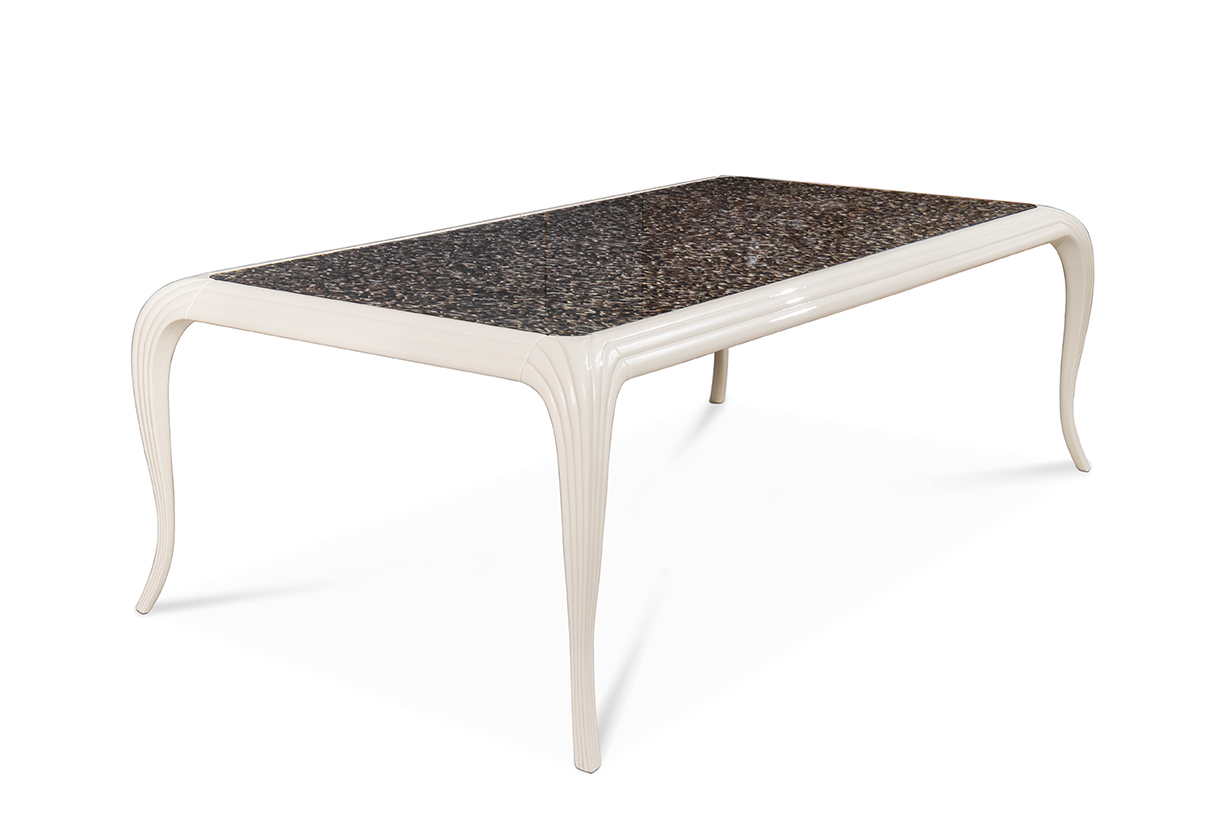
By utilizing bold, summer touches in your interior decorating, you can bet that summer feel will stick around all 365 days of the year.
Photos courtesy of Koket
Amidst the COVID-19 crisis, people and businesses have had to adapt to a “new normal,” with daily life shaken up by social distancing and limited physical contact. Making changes to adhere to guidelines while keeping people safe often requires some creativity, and MY Furniture, a luxury, high-quality furniture retailer, has made it easy for customers to enjoy furniture shopping without ever having to leave their homes.
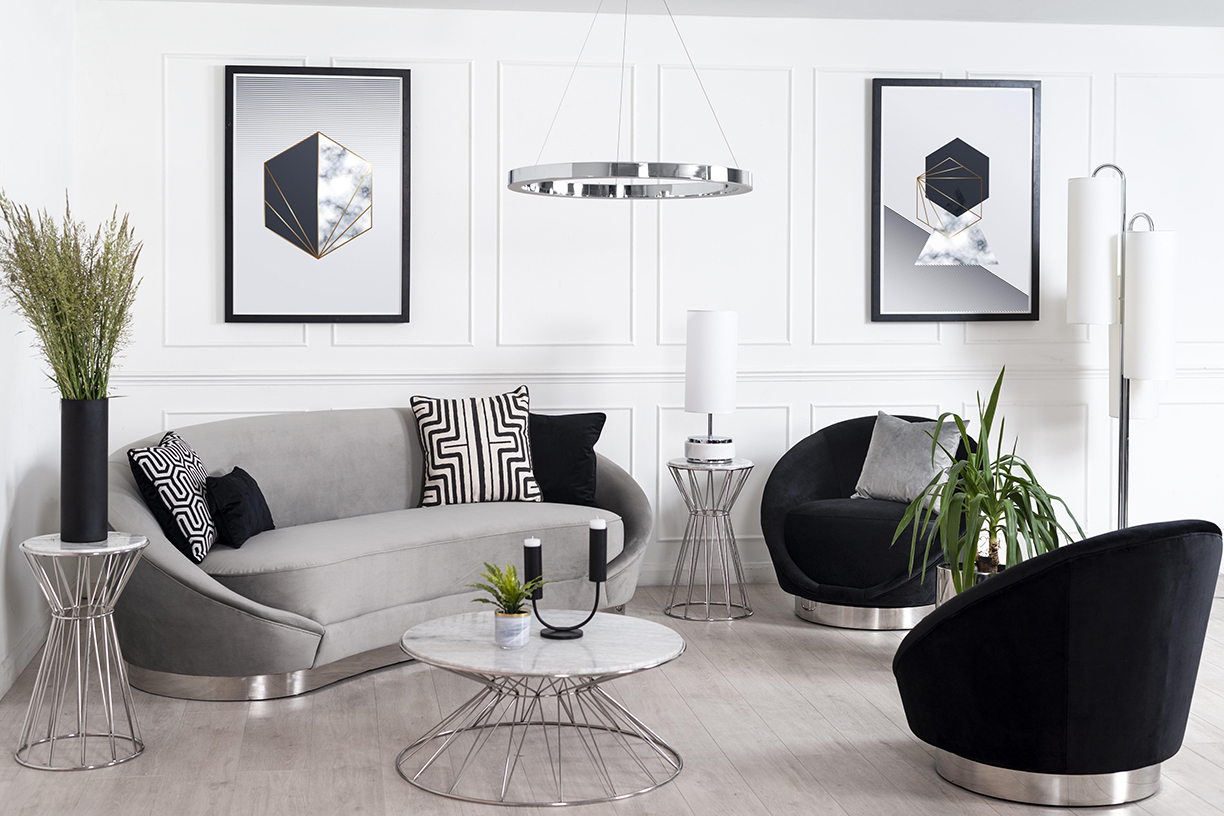
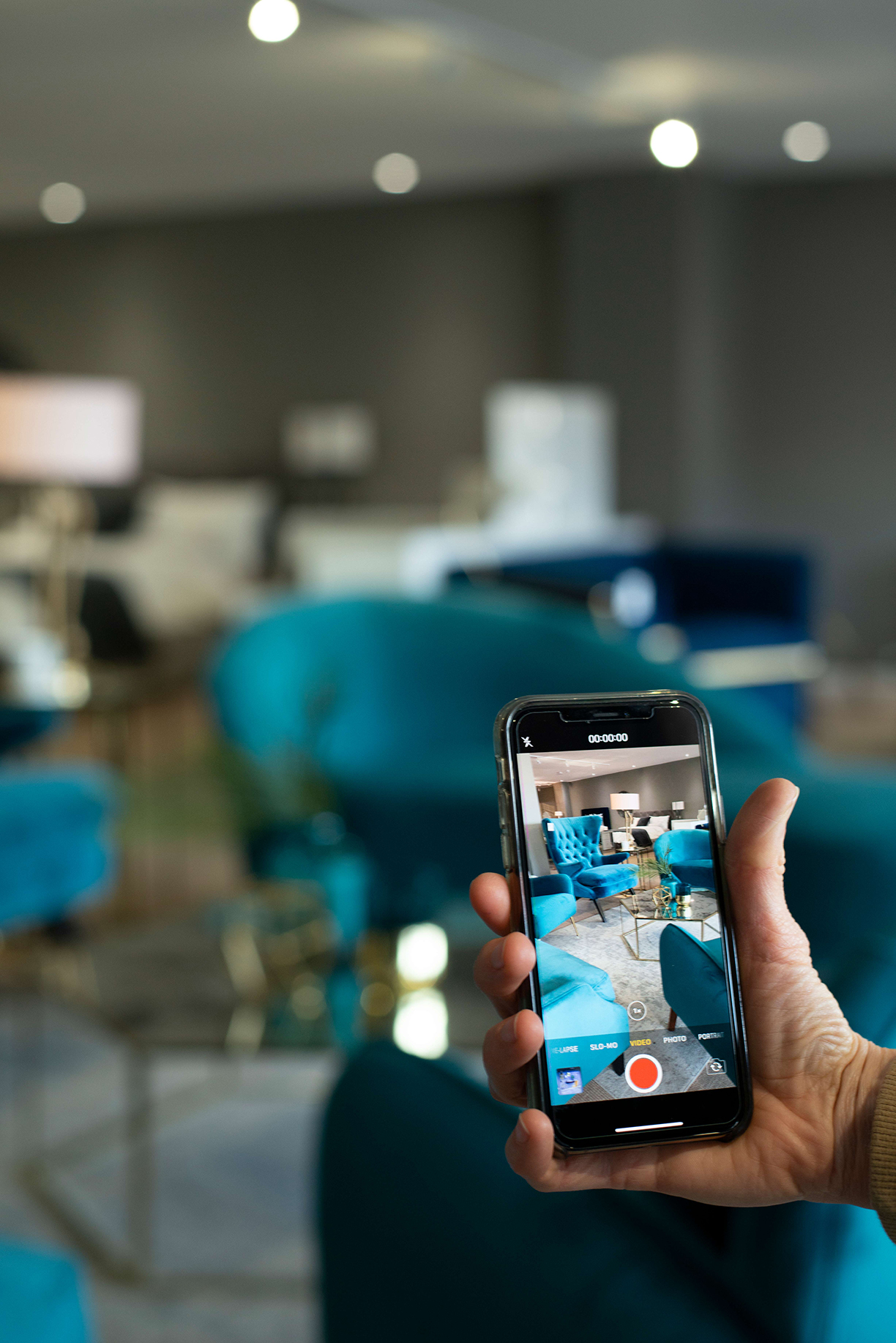
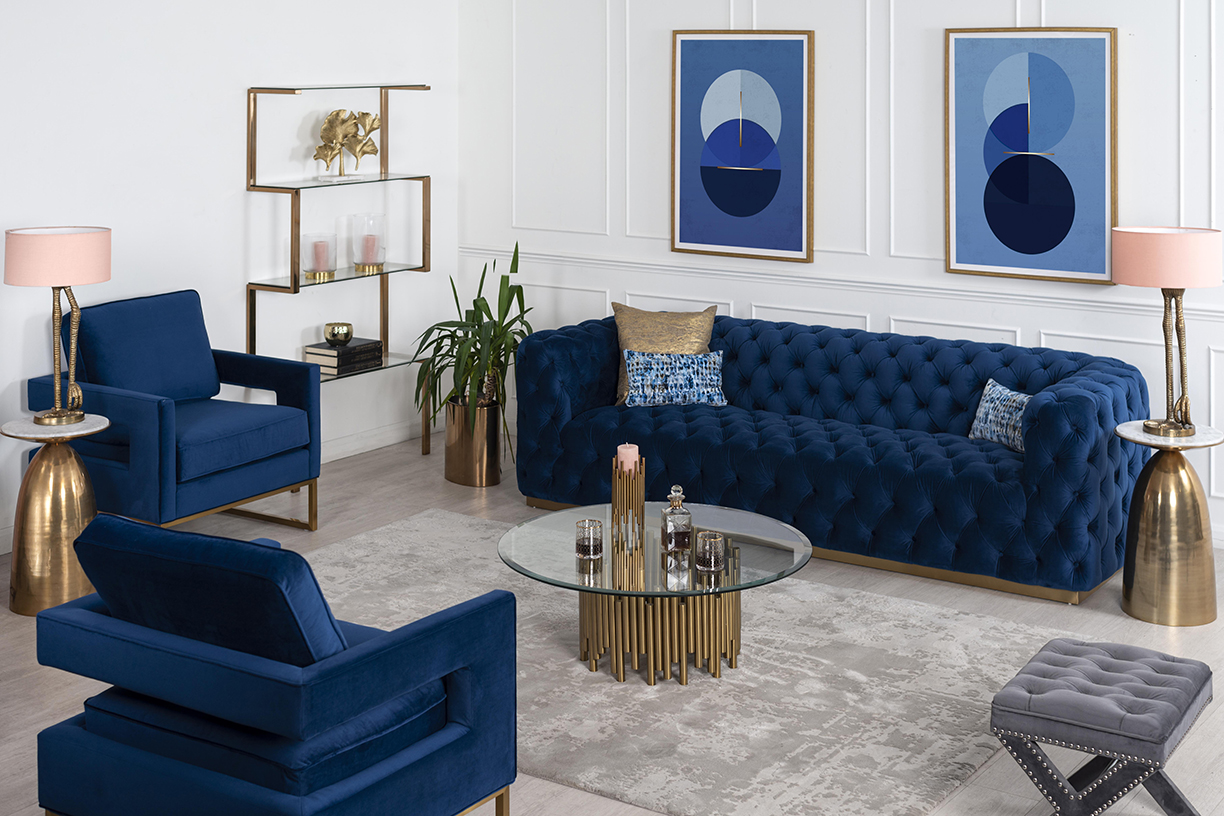
First, MY Furniture introduced a Video Call Facility for customers, a video call-in appointment that allows people to easily visit the company’s virtual showroom. By navigating to the website and clicking the “Request Video Call” button, a member of the MY Furniture team will be able to call the customer at a suitable date and time via FaceTime, Skype, or WhatsApp depending on the customer’s preference to show them the item they are interested in. This is also helpful for busy customers who would rather skip out on viewing furniture pieces in person in a showroom.
To control the flow of customers in and out of their showrooms, MY Furniture has also introduced an appointment system, adhering to social distancing and capacity guidelines. Deliveries are handled by couriers that deliver to the front door, and not inside the property, to maintain cleanliness.
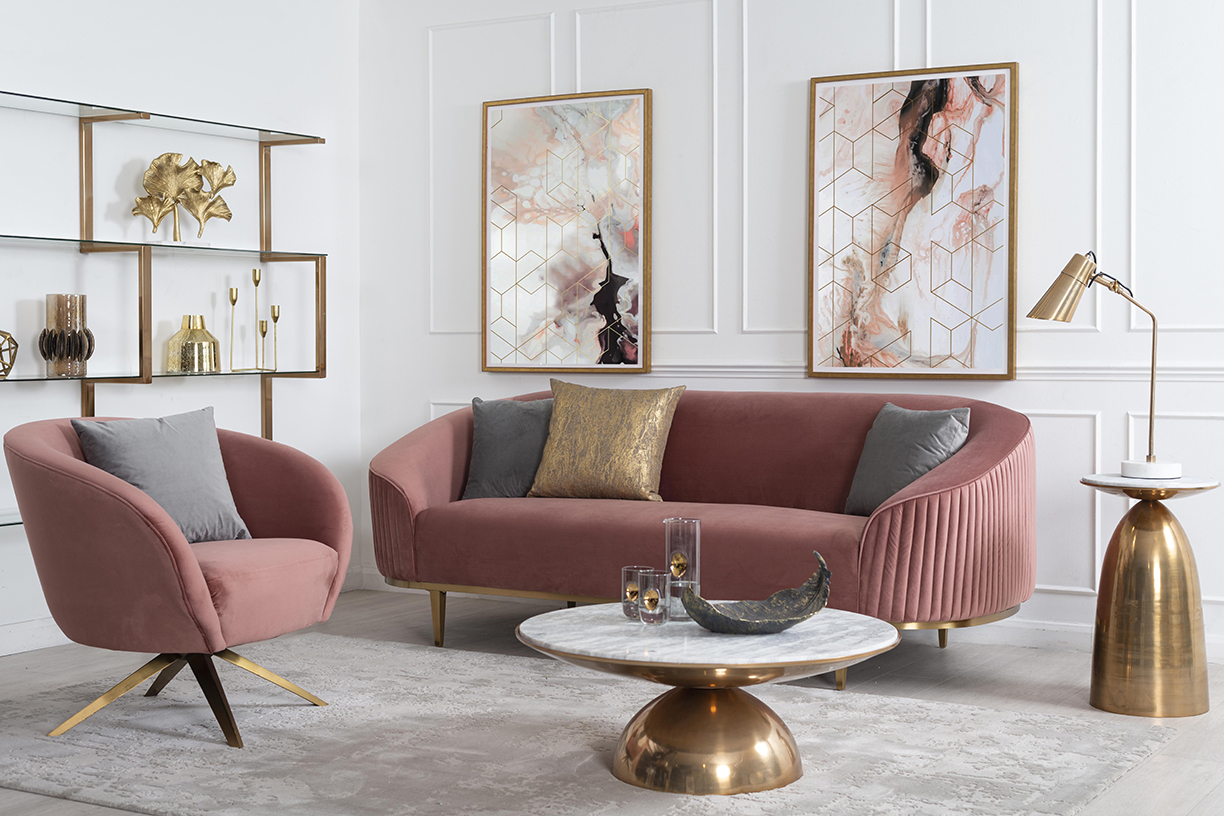
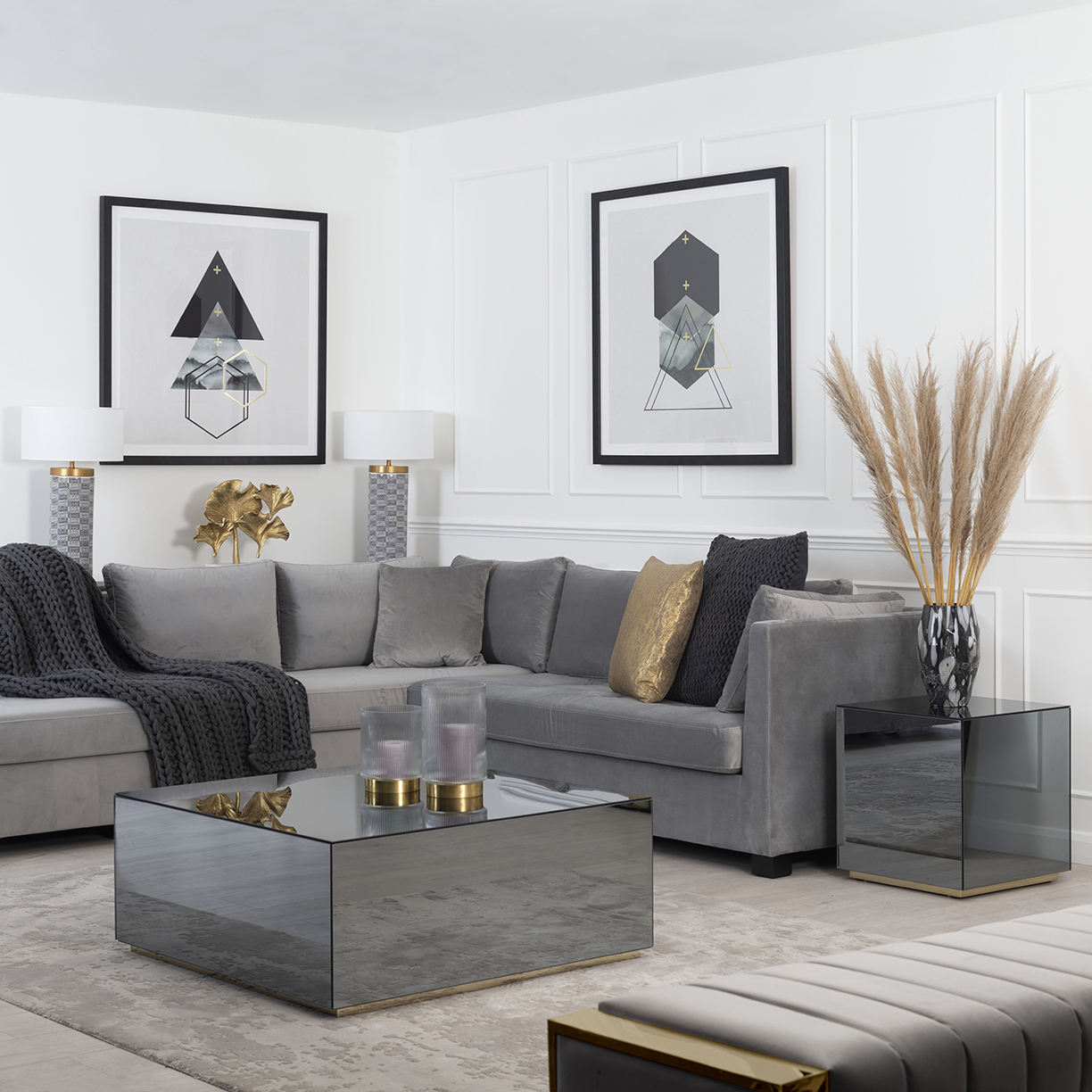
Increased social distancing and personal appointments have proven to fare well for MY Furniture, with the changes resulting in a 30-percent increase in online business and an increase in older customers shopping online who previously would not have shopped this way. With new adaptations like virtual shopping and private appointments becoming the norm, customers can rest assured that furniture shopping can effectively be a safe, enjoyable experience.
Photos courtesy of MY Furniture
Travel through time and admire seven handcrafted designs in the New World Collection designed by Sasha Bikoff for New Ravenna, America’s premier mosaic designer and manufacturer.
The historical journey begins in the 17th century with Atlas Major, a charming rendition of Dutch cartographer Joan Bleu’s Baroque geography. The aged appearance of a crinkled, antique map was replicated by New Ravenna’s design team applying a honed finish to the 12 different stones, and then selecting a darker grout to finish the piece.
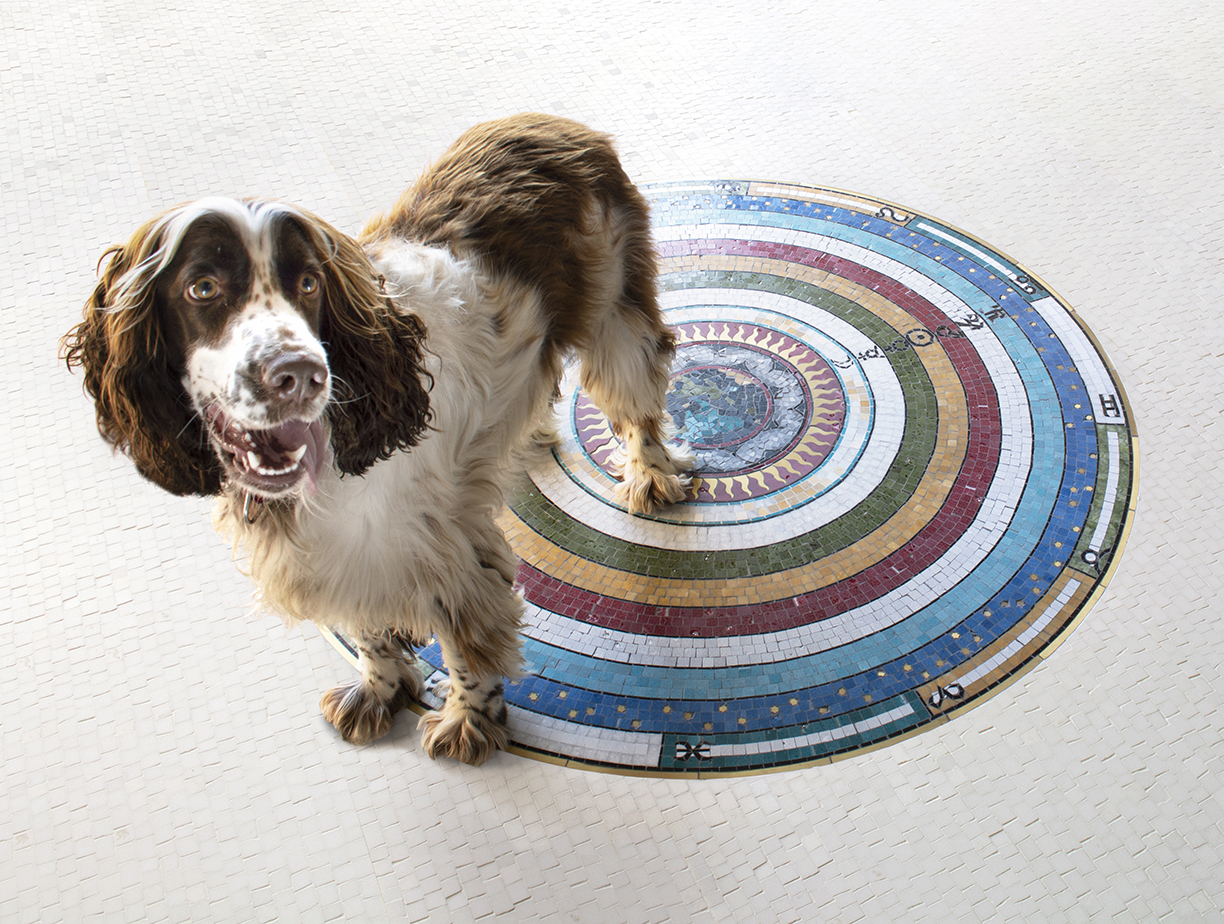
From the 17th century, we move to the modern world and the quintessential American textile pattern: the bandana.
“Tile is a cultural emblem that represents a country’s aesthetic. There are unlimited beautiful tiles that feel Italian, Delft, Portuguese, Spanish. America’s history is younger and the culture has a more relaxed vibe. I’d like to define that through tile,” Bikoff says.
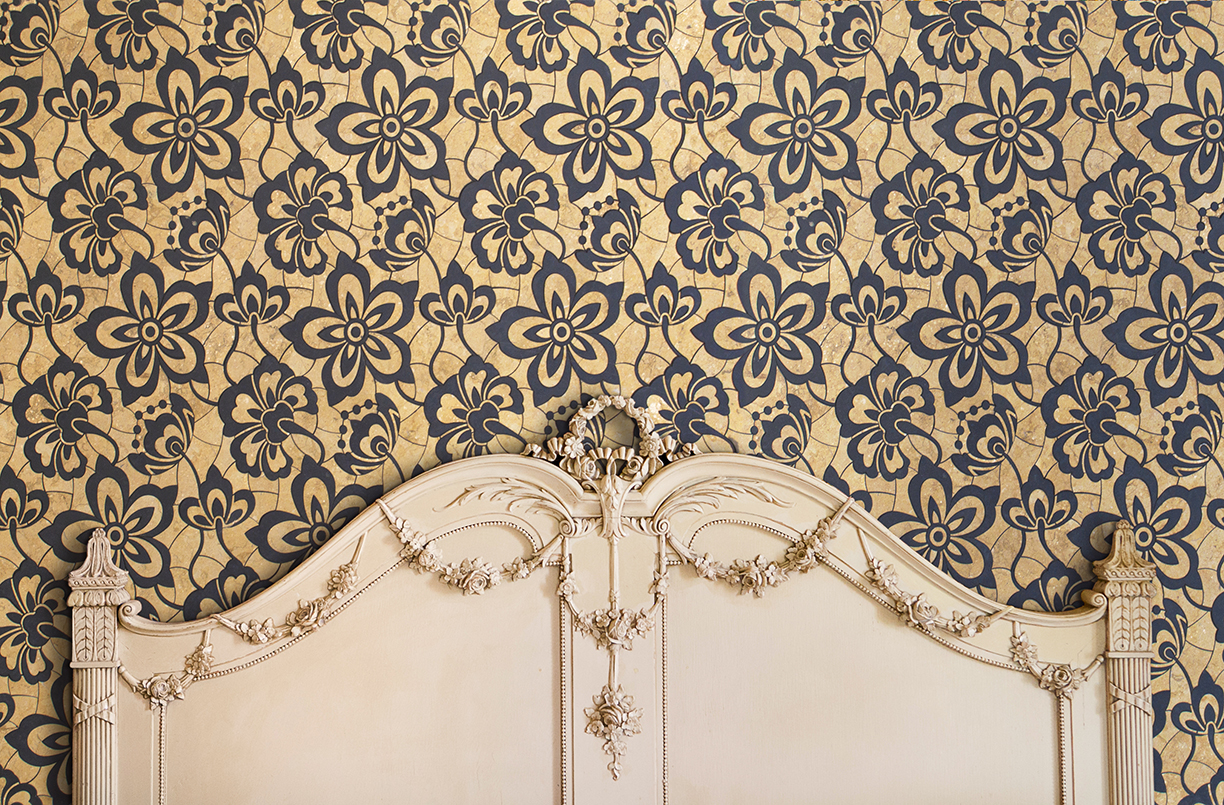
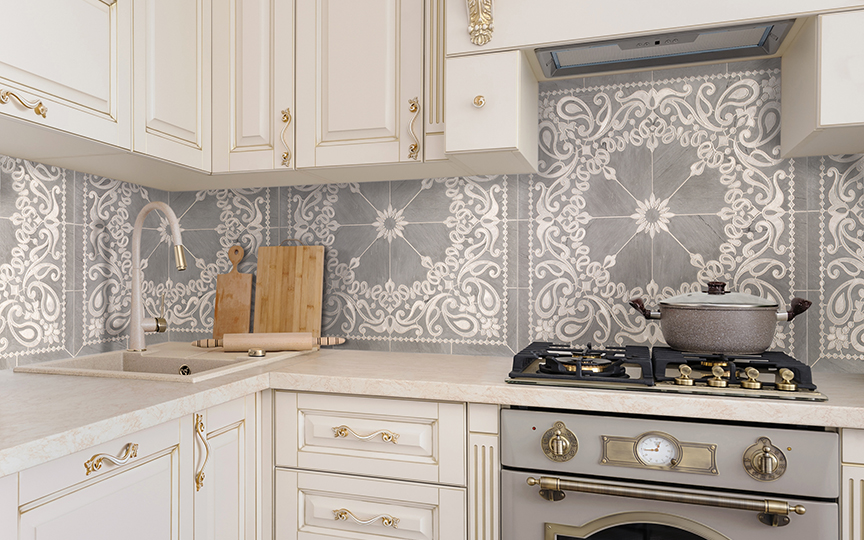
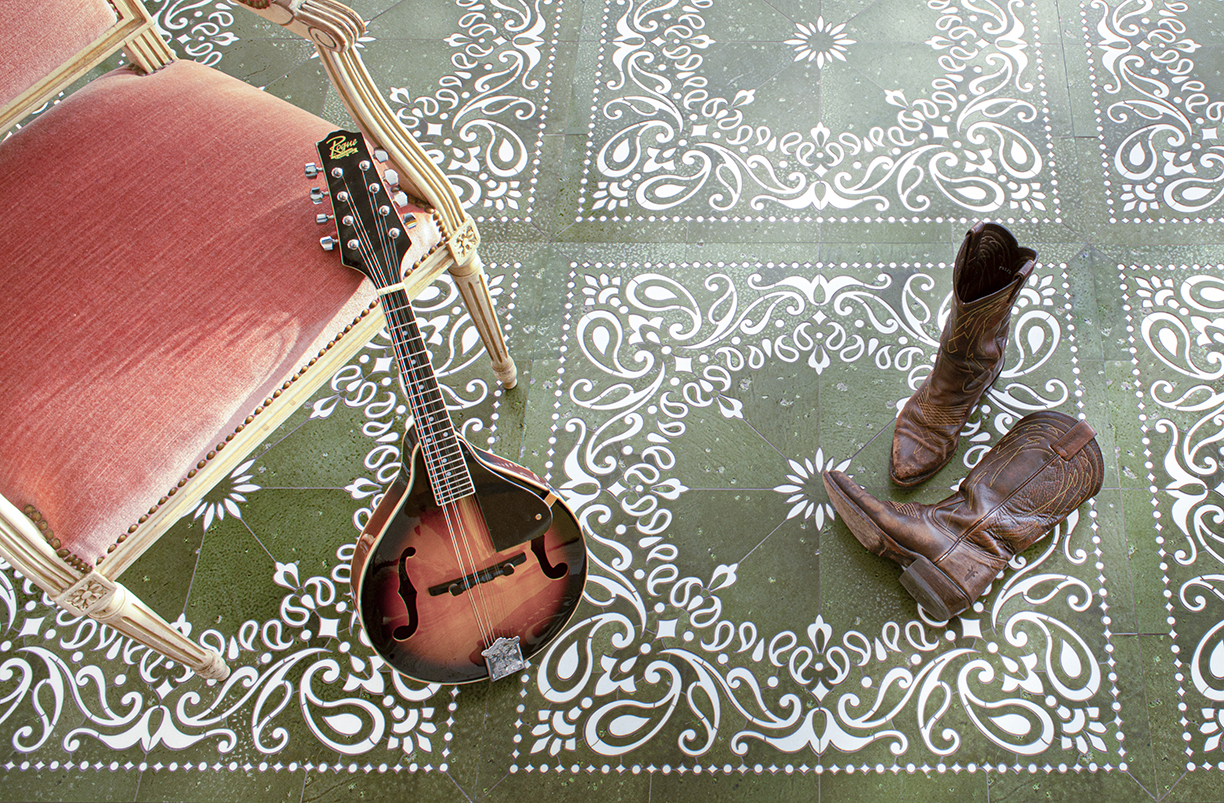
The iconic bandana print is available in two versions: East Coast and West Coast. A honed background was chosen by Bikoff and New Ravenna to give the allure of softened cotton, and grout lines and paisleys mimic the cloth’s permanent creases from being worn and folded hundreds of times.
To contrast the bandana design, three delicate lace designs, Point d’Angleterre Lace, Queen Mary’s Lace, and Swiss Dot Lace bring in the gentle femininity found in women’s garments and home textiles to the collection.
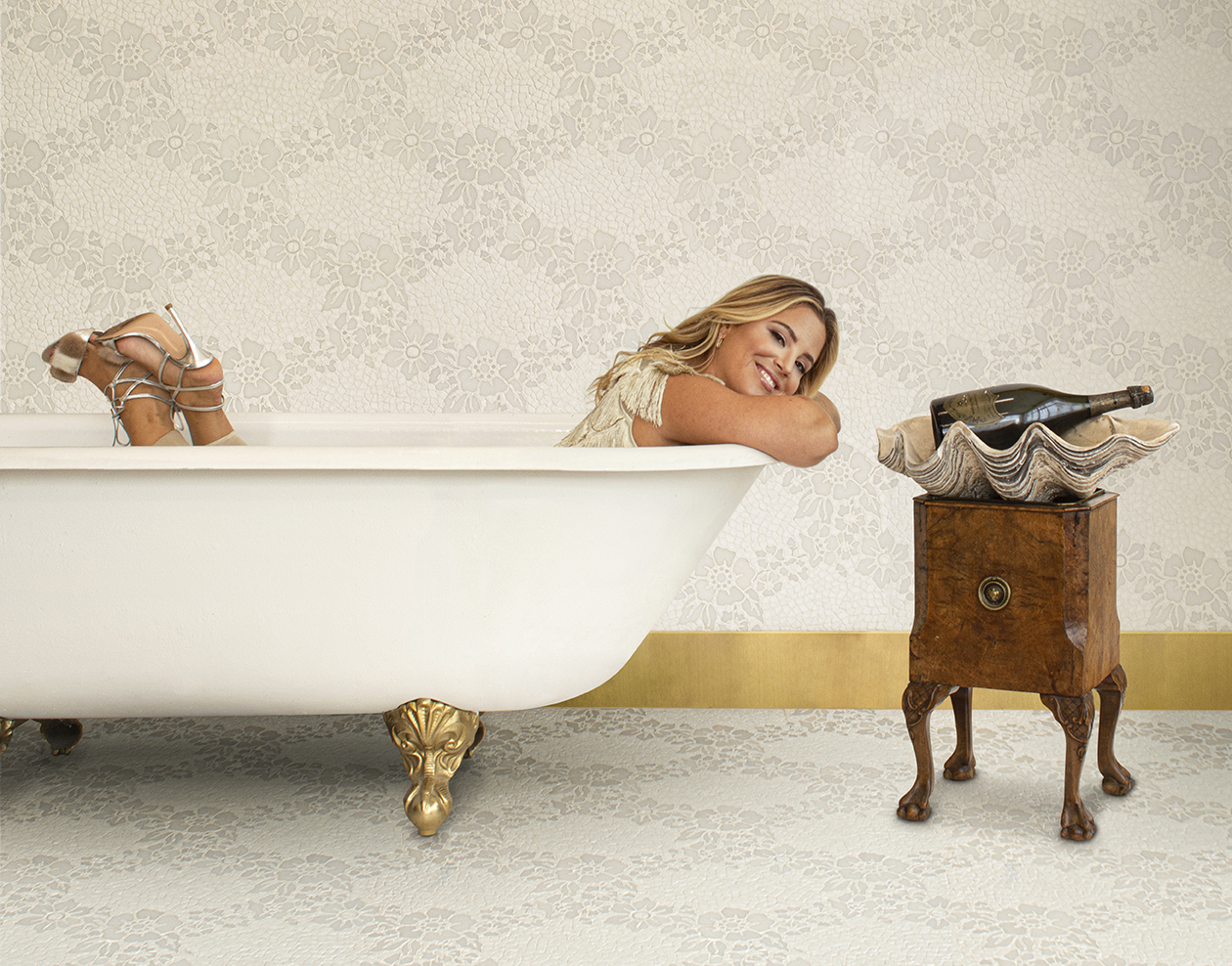
Designer, Sasha Bikoff
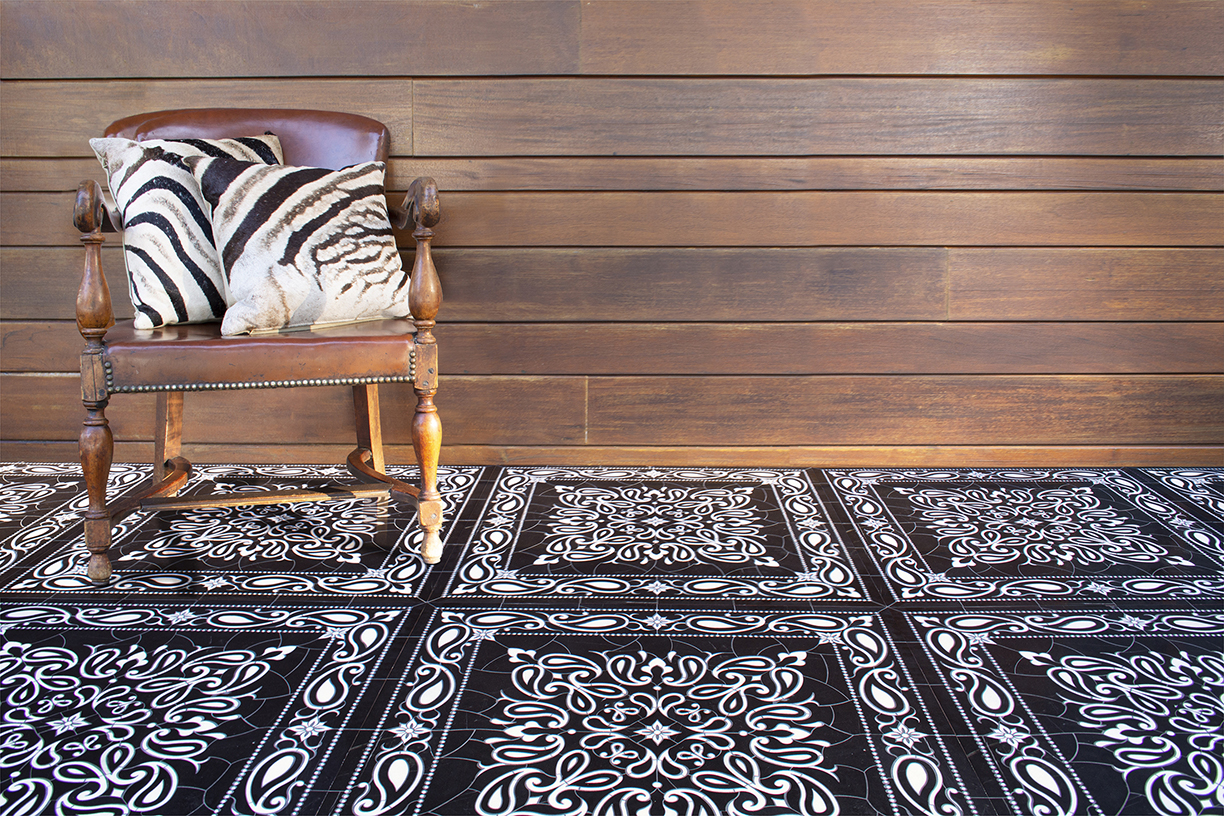
“The lace is a juxtaposition to the bandana prints and offers the same playful idea of turning a textile into a tile mosaic,” Bikoff adds.
The designs, inspired by the complexity of antique lace, include honed and tumbled stone to create texture, and differing grout colors to highlight the intricate webbing. The New World collection is as versatile as it is beautiful, and can be installed on walls and floors, indoors and out. Add a splash of color and a dash of design to your home with help from New Ravenna.
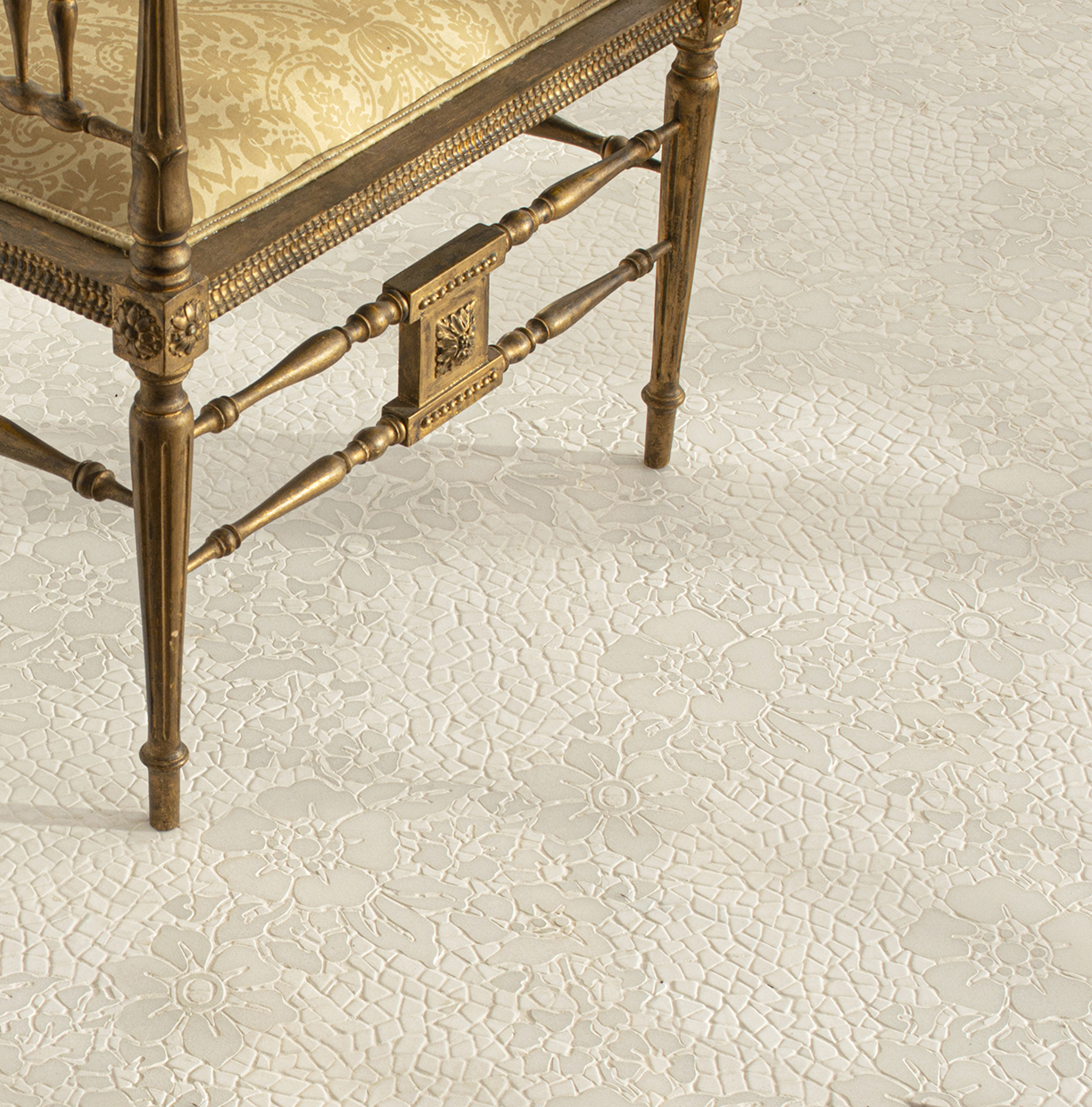
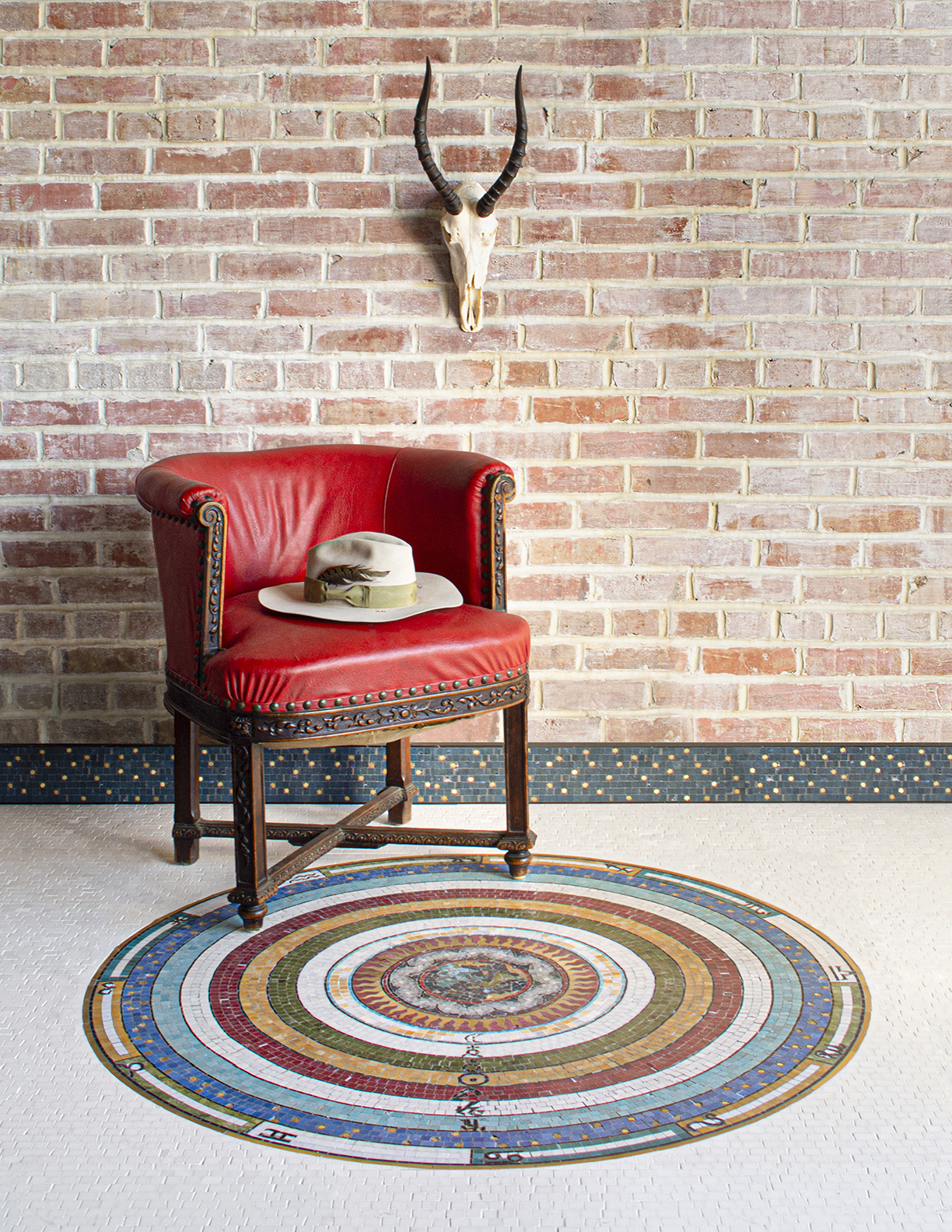
Photos and featured image courtesy of New Ravenna
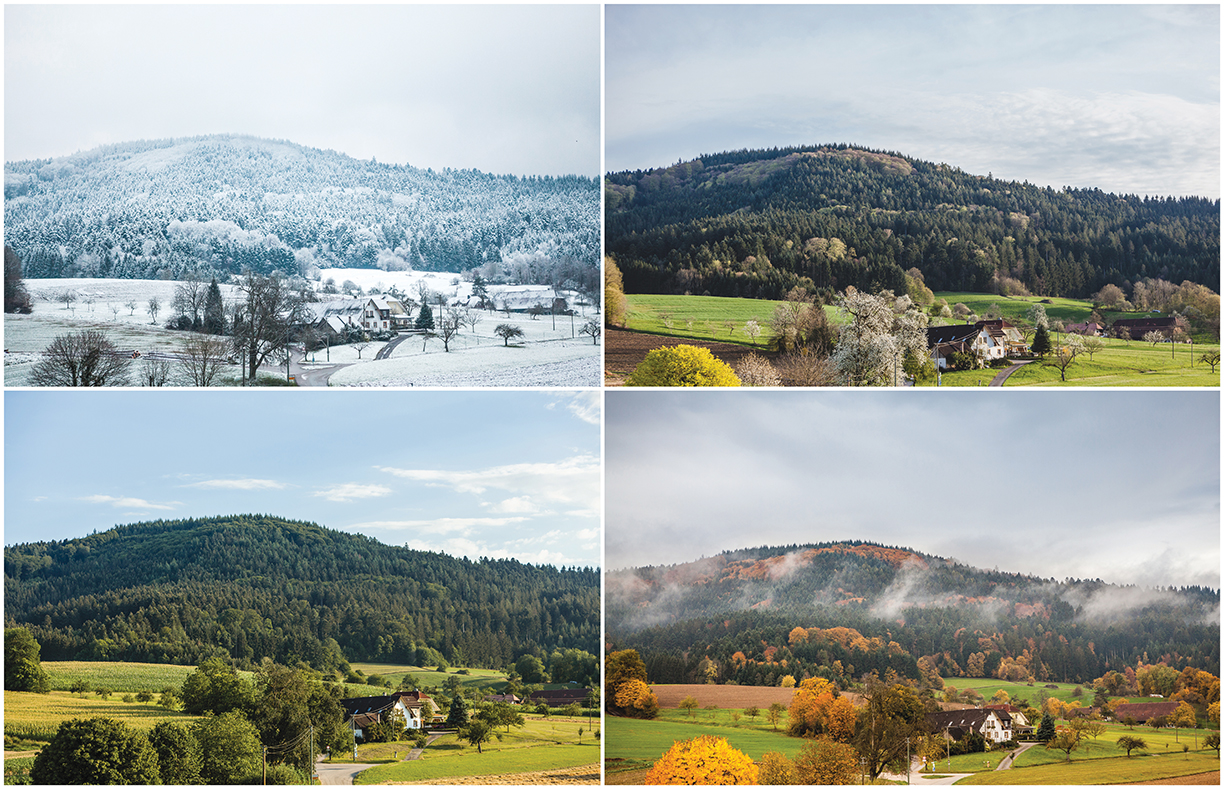
©istockphoto.com / Arita Cimermane
“The seasons in the landscape, much like the seasons of one’s life, are to be embraced, appreciated and weathered.” — Robin Kramer
When it comes to the seasons, an adaptable landscape is always a challenge. In northern climates, the focus is too often on the fleeting warmer months where blossoms are abundant and beautiful. Into late fall, the vibrant leaves have fallen and a bare winter — and landscape — sets in. In warmer areas, the challenge is less about the seasons and more about weather extremes such as droughts or rain.
We talked to luxury landscape designers about how they work through the challenges of the changing seasons and find beauty in the landscape all year long.
A Strong Framework
“I consider structure to be the most critical component in any garden. A successful garden design will look good in any season if the bones of the garden are well designed,” says New York City-based Landscape Designer Robin Kramer. “Paths, walls, edging, hedges, pergolas and water features are the permanent features that make a garden strong and confident. The flowering plant material is the dressing of the landscape and can easily be modified based on the desires of the gardener.”
“Ideally, a landscape is something that transitions throughout the year and it has its glory days throughout every season,” says Vermont-based Landscape Designer Ashley J. Robinson. “They are rarely looking for a one-shot wonder with a full-on explosion of bloom in the spring.”
Robinson seeks out materials such as wood, metal or other elements that are not herbaceous in order to craft a composition that is visually intriguing despite the blooms, or lack of blooms. “Natural stone, boulders, outcropping in the garden. A well-intentioned feature is important for a winter garden.”
Similarly, Teresa Watkins, a Master Gardener and specialized horticulturist for over 20 years in Florida, relies on hardscape and garden art to design spaces that truly fit a client’s personality, while at the same time ensuring the health and sustainability of the landscape. “I have an ongoing two-year project designing a formal estate landscape with a rose garden with walls, a faux stone bridge, butterfly garden, water features, orchard, meandering pathways and poolscaping.”
An architectural framework is key to high-end landscape, and Pennsylvania-based Landscape Designer Donald Pell is an expert at finding a balance of this within a range of vernaculars — from English-style to modern. “Our work always includes thoughtfully designed architectural spaces. These can be simple and they can be very substantial,” he says. “Right now, I am building a very large promenade through a woodland
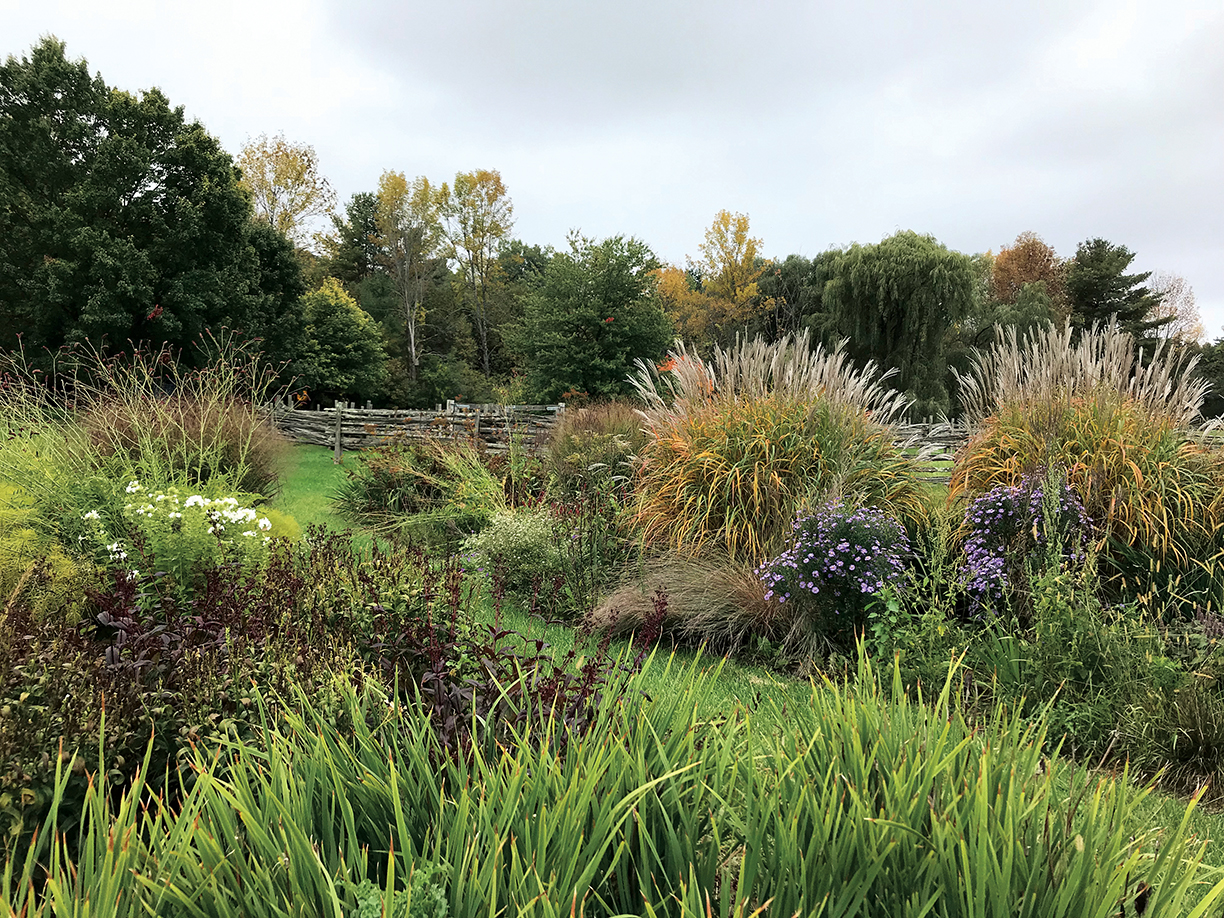
|
A beautiful wild garden crafted by Vermont Landscape Designer Ashley J. Robinson. Photo courtesy of Ashley J. Robinson. |
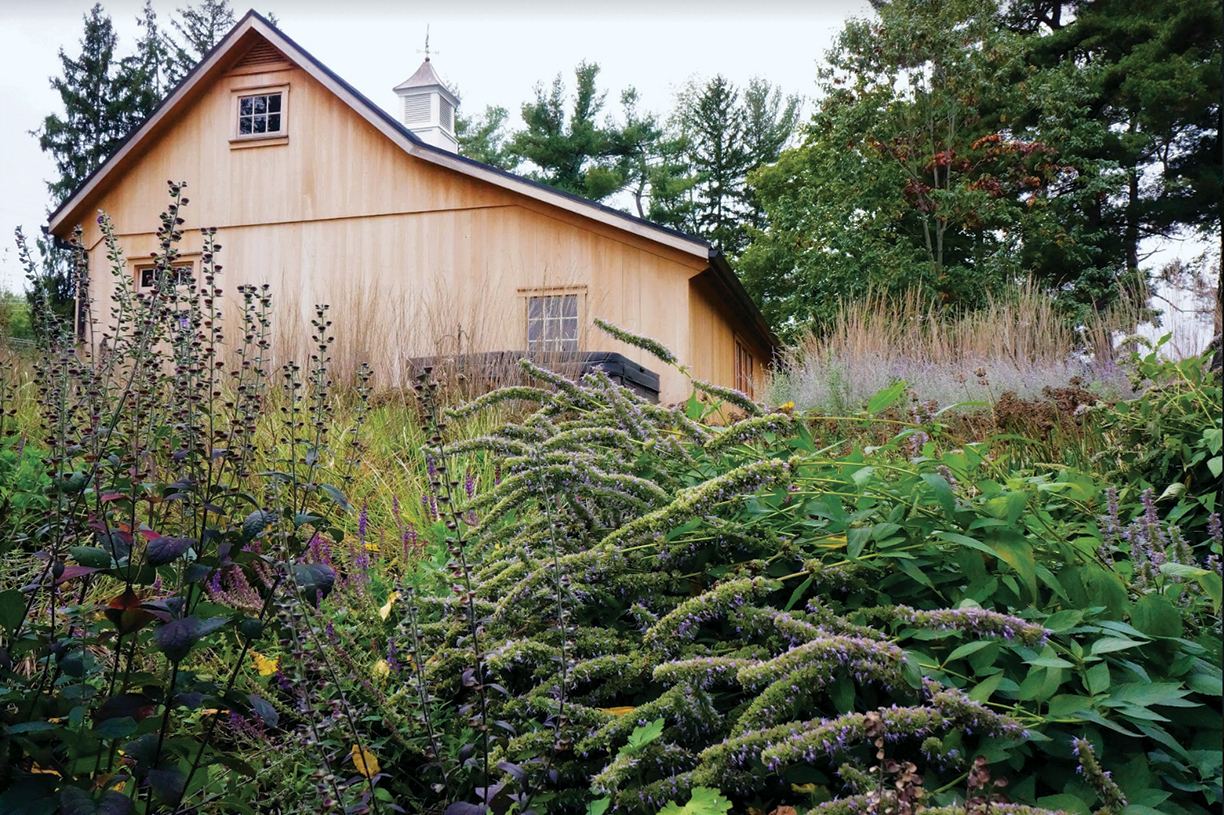
|
Donald Pell Gardens gave this 1700s Colonial Farmhouse garden an update with native and cosmopolitan plants used to evoke the regional landscape. Photo courtesy of Donald Pell. |
that I would describe as very classical, and the plantings are very much impressionistic woodland. I specified hand-cut fieldstone curbing with paths that has a Pennsylvania Colonial feel, and I really like bond pattern paving details angled from the home, which tend to be very modernist.”
When it comes to warmer climates, such as those of the Sun Belt, structure has less to do with looking good throughout bare seasons, but more to do with a landscape that can sustain year-round outdoor living. “For contemporary homes in Southern California, the indoors rolls right outside,” says landscape architect Scott Zucker. “You’ve got enormous sliding doors with pocket entry, kitchen and family rooms that pour right out onto the terrace.” In designing these homes, materials that can withstand the outdoors, but also look just as beautiful indoors is the challenge. A huge trend, Zucker points out, is utilizing porcelain or ceramic pavers that not only keep a stunning transitional look, but also require very little maintenance.
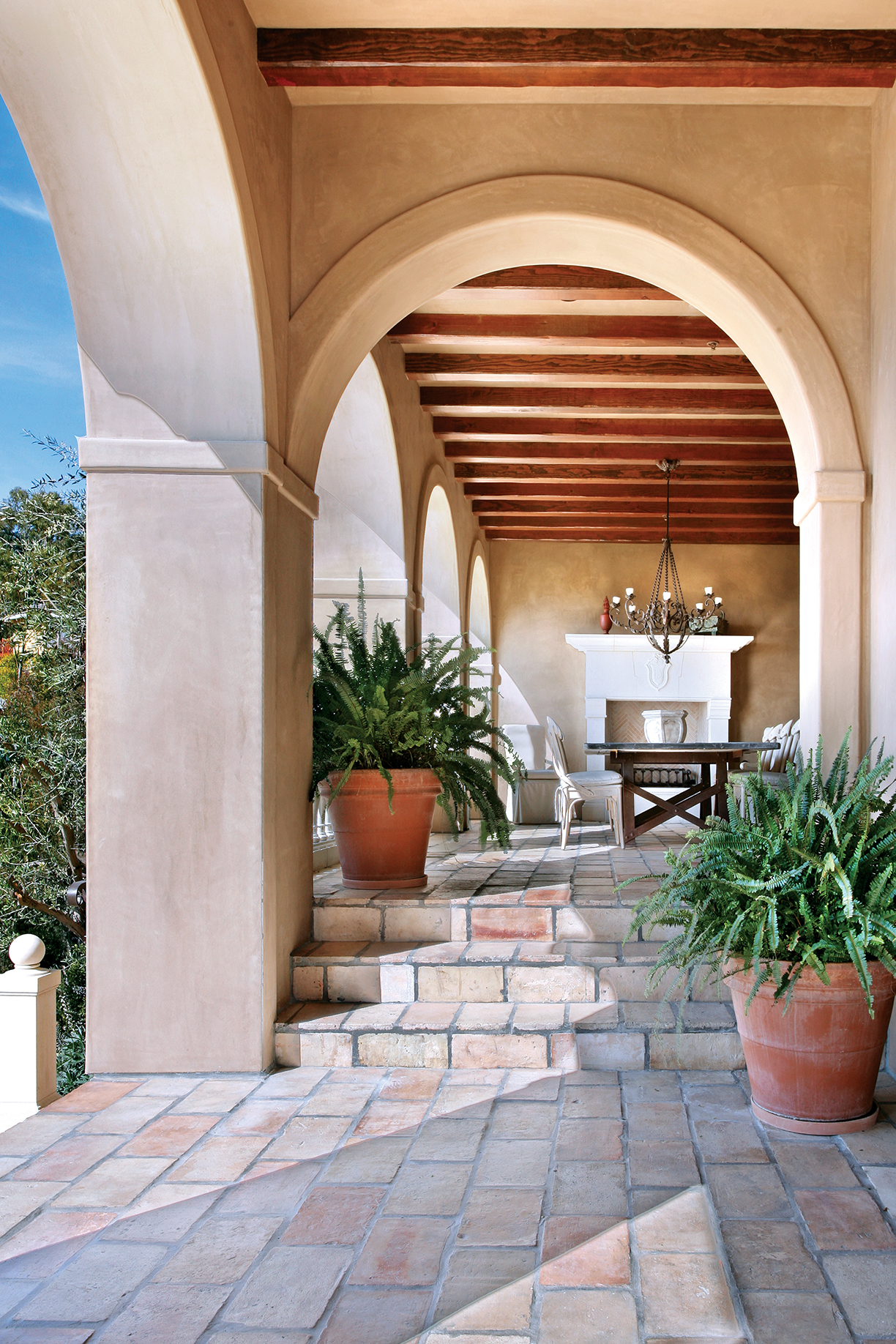
|
Above, an outdoor portico crafted from stone at a Southern California residence designed by Scott Zucker of Zucker Design Associates, Inc. Below, an arbor for a Laguna Beach residence offers an eye-catching landscaping feature. Top photo courtesy of Jeri Koegal. Bottom photo courtesy of Scott Zucker. |
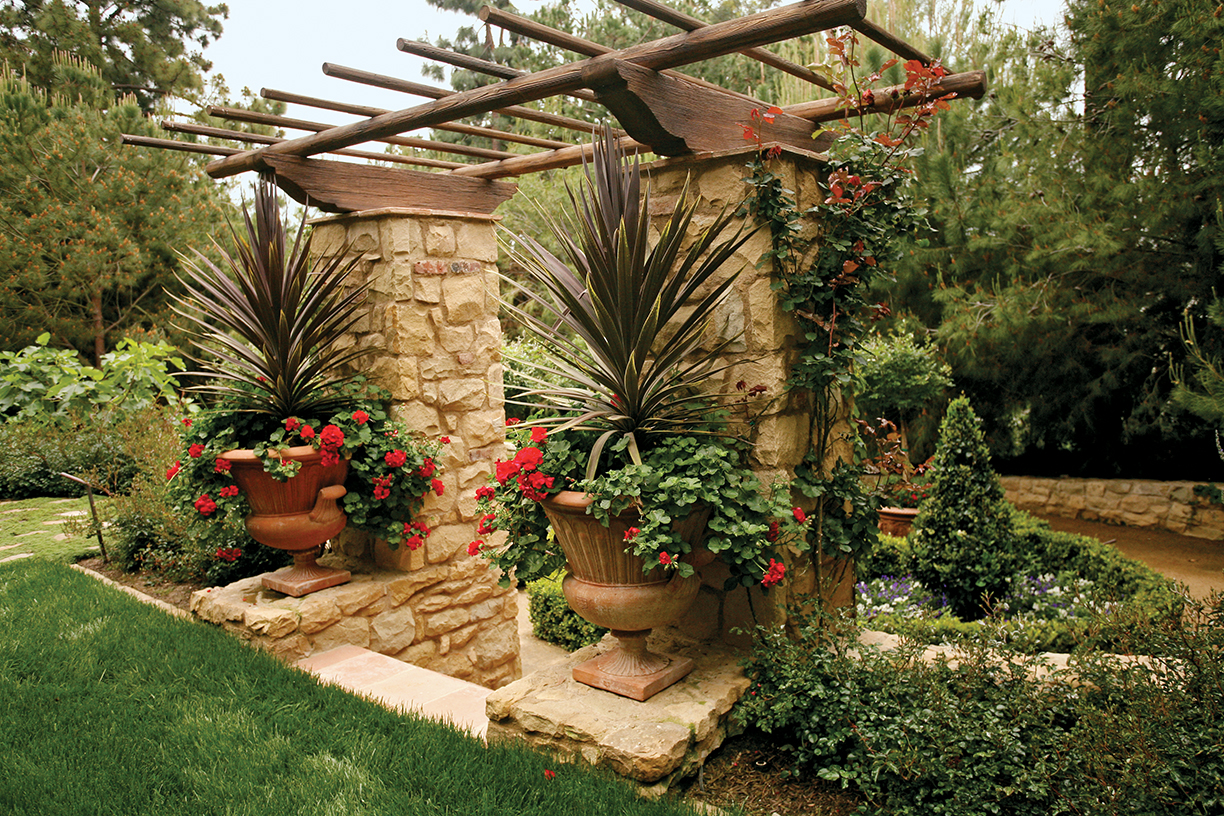
The Four Seasons
“The seasons themselves aren’t a challenge, but an exciting opportunity,” says Pell. “Even thinking about texture and emotion of the dead tissue of herbaceous plants can be an opportunity to compose something beautiful. It’s the same as working anywhere in the world — there are opportunities and constraints.”
While spring and summer’s spotlight is on the flower, that shifts completely when fall arrives. “I never focus on just the flower,” advises Pell. “They are just too ephemeral. They are, of course, an important component, but the structures of the plantings at their worst is where I start. I am looking for plants that look very beautiful in a given composition, and I want the composition to be able to hold up in extremes of weather.”
“Designing through the seasons takes careful planning and a thorough understanding horticulturally on the attributes of trees and plants,” says Kramer. “Floral succession bloom is created by selecting perennials that will create a parade of flowers from spring through to the first frost. This is supported by spring bulbs and flowering trees.”
“In fall, we plant thousands of spring bulbs. It is a late task in season, but such an important one,” continues Kramer. “In the spring, I want the ground to be punctured with green shoots pushing their way forward, poising for their bloom. After months of frigid temperatures and inches, even feet, of snow, New England begins to warm. Those rather odd-looking bulbs we planted are now a sure sign of spring and a reminder that we too, have survived another winter.”
“There’s a lot to be said for winter in the garden,” says Robinson. “It requires you to not do a lot of cut back or maintenance. Generally speaking, you should wait out the things you don’t want there, such as foliage debris and leaf litter — these things are good for increasing organic matter in the soil. You shouldn’t scrape landscape bare — it’s all about layering and allowing that to happen naturally.”
Warmer Climates
While places with warmer climates, such as Southern California or Florida, don’t have the challenges of designing through autumn and winter, they do have seasons of their own: dry season, fire season, and wet season.
“The water use in California really drives what we can and can’t do,” says Zucker, who mentions WELO (Modern Water Efficient Landscape Ordinance) and fire departments regulations, as well as restrictions on paving and the amount of non-permeable landscape a property is allowed to have. “One of the trends that is big in California these days — necessitated by lack of water — is drought-tolerant plants.” These include plants such as succulents or agaves that also offer stunning structural plant material that really create a powerful look for a landscape.
“When I’m working on my designs, I take into account not necessarily annuals or perennials, but the permanent flowers that clients especially desire so that at any time of the year it will be blooming,” says Zucker. “I tend to group plant material together to give a bigger impact. Instead of giving too many species, I pare it down so that aesthetically, from the front yard to the backyard, the whole landscape ties together.”
While Zucker is looking for colorful plantings that can withstand the lack of water, places like Florida experience the opposite — with a wet season that lasts at least half of the year. “Florida winter season can be dramatic. We can go from 85 degrees one day to 28 degrees the next, which is not enough time for tropical plants to acclimate to cooler temperatures,” says Watkins. “The other issues are temperatures averaging 85 degrees for six to seven months out of the year, where our plants can be growing all year, and over 50 inches of rain.”
It’s in these areas where irrigation designers are needed most fevertly along with specialized consideration of the amount of sunlight, soil moisture, soil pH — all extremes associated with the tropics. Without seasonal change, there is also a shortage of compost, plant material and nutrients, which is easily received each fall with the turning of the seasons in other parts of the country.
“I often say, all of life’s lessons are learned in the garden,” says Kramer. “Each season delivers reminders and rituals. It is the moments on which lives are built and cherished.”
Give your home a new spring in its step with colorful windows and doors that will draw the eye and boost curb appeal.
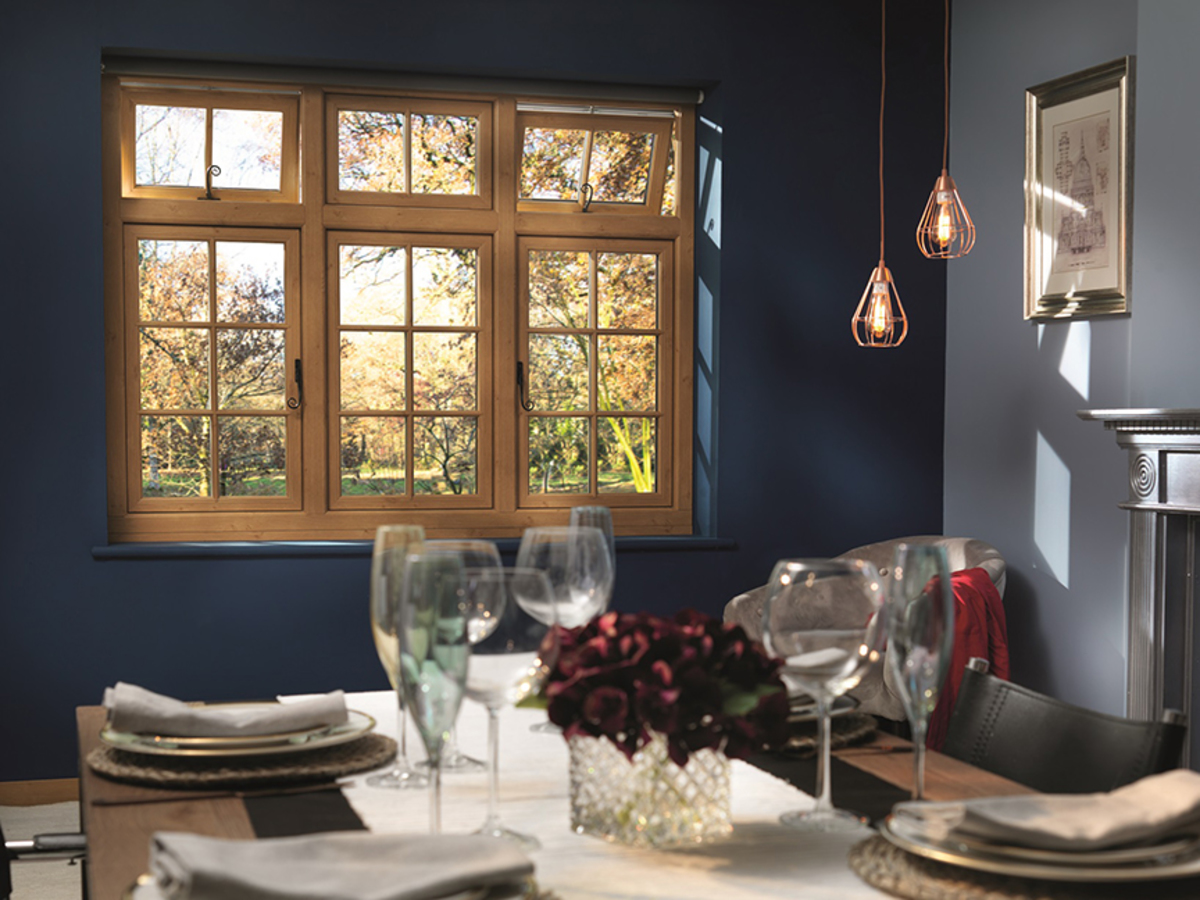
Replacing white window frames with colored ones, and a matching or contrasting door can make your home stand out from the crowd and give the impression that you have specifically chosen them to suit your property, rather than just sticking with what is currently in situ.
All of Evolution’s timber alternative windows and doors are highly energy-efficient and virtually maintenance-free.
Follow these tips if you are upgrading your windows or doors.
Color matching
Evolution offers 10 standard, timber-effect finishes (including white, black and three shades of gray) to complement traditional and contemporary properties. Alongside these colors, Evolution offers a bespoke color-matching service with over 200 RAL colors to choose from. Aside from the current trend for gray, homeowners often choose pale green or cream to give country cottages a classic look.
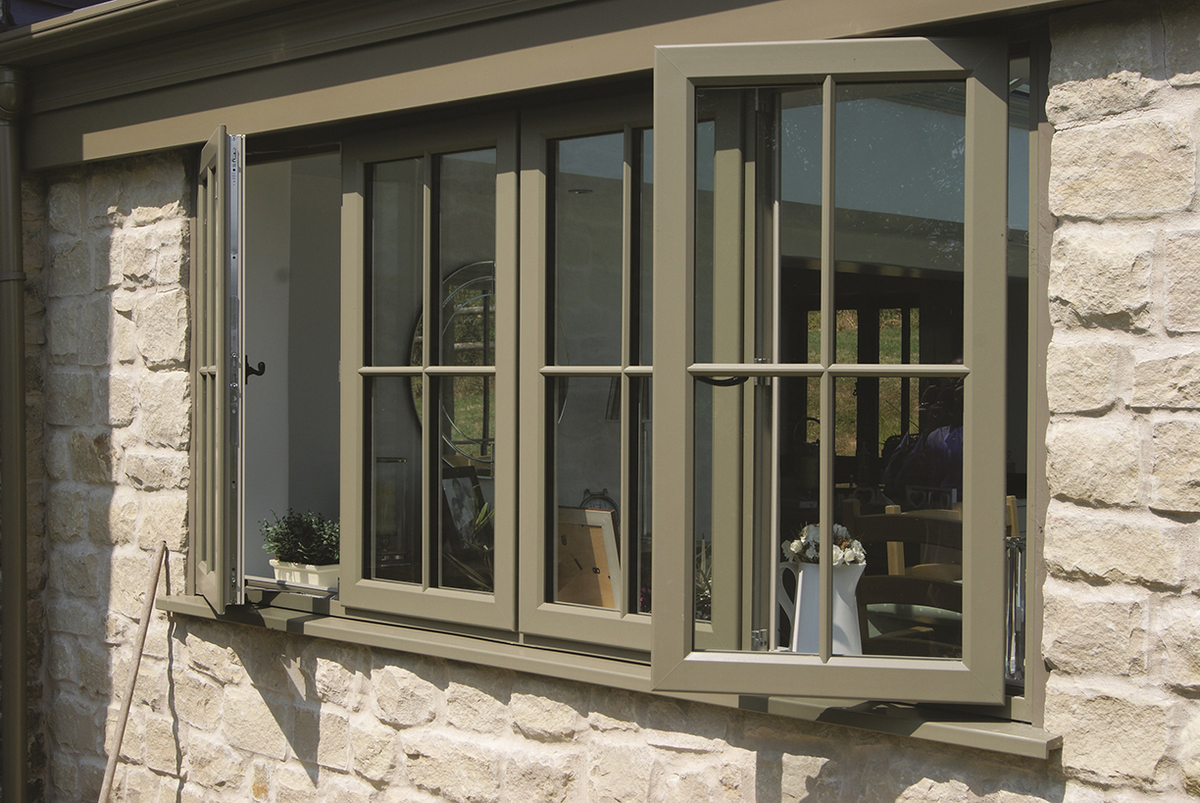
Fifty shades of gray
Gray doors and windows are leading the way in the popularity stakes and the trend doesn’t seem to be showing any signs of waning. There are infinite shades of gray, but Evolution’s most popular choices are olive-gray, agate gray and anthracite gray. The lighter olive and agate grays add an elegant feel to character properties, while anthracite creates a more contemporary finish.
Black or white?
Whilst white gives a clean, contemporary finish, black window frames are becoming more popular. Often thought a contemporary choice, black window frames can also enhance traditional properties, particularly those with leaded windows, such as Tudor-style homes.
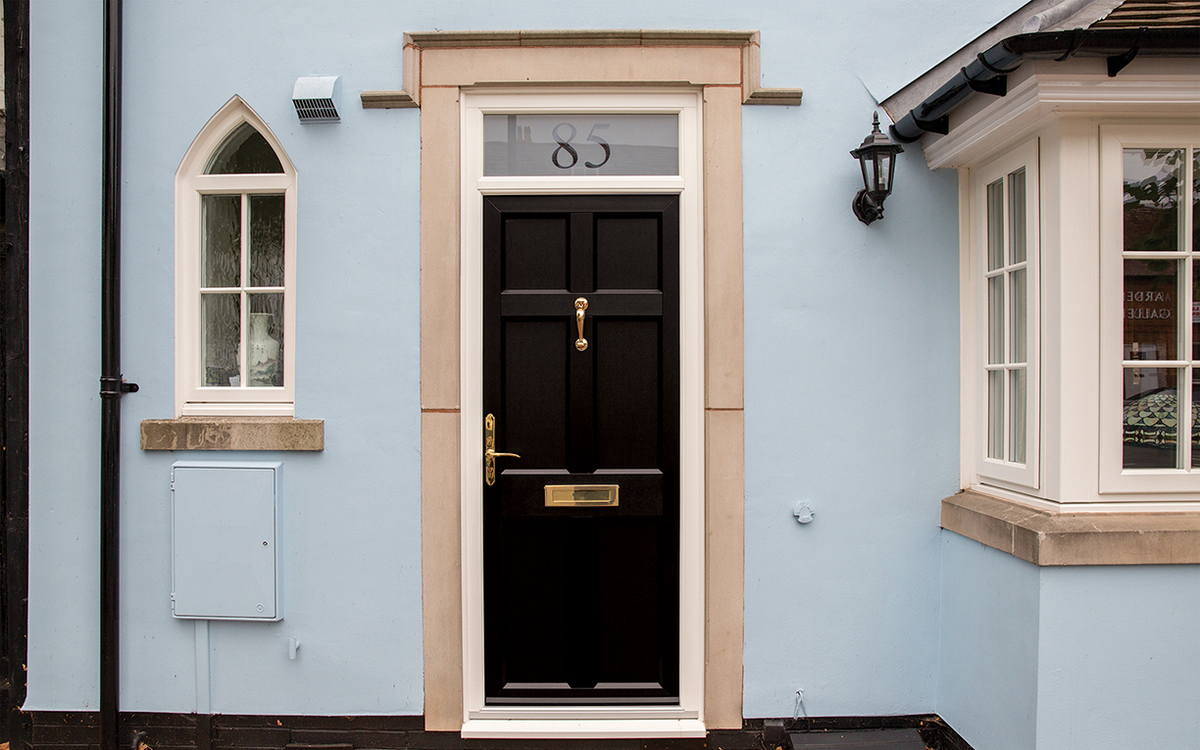
Timber colors
Timber colors are still a popular choice for doors and windows. Timber colors, such as oak, natural wood or rosewood, can enhance traditional properties, but also look fabulous on contemporary homes.
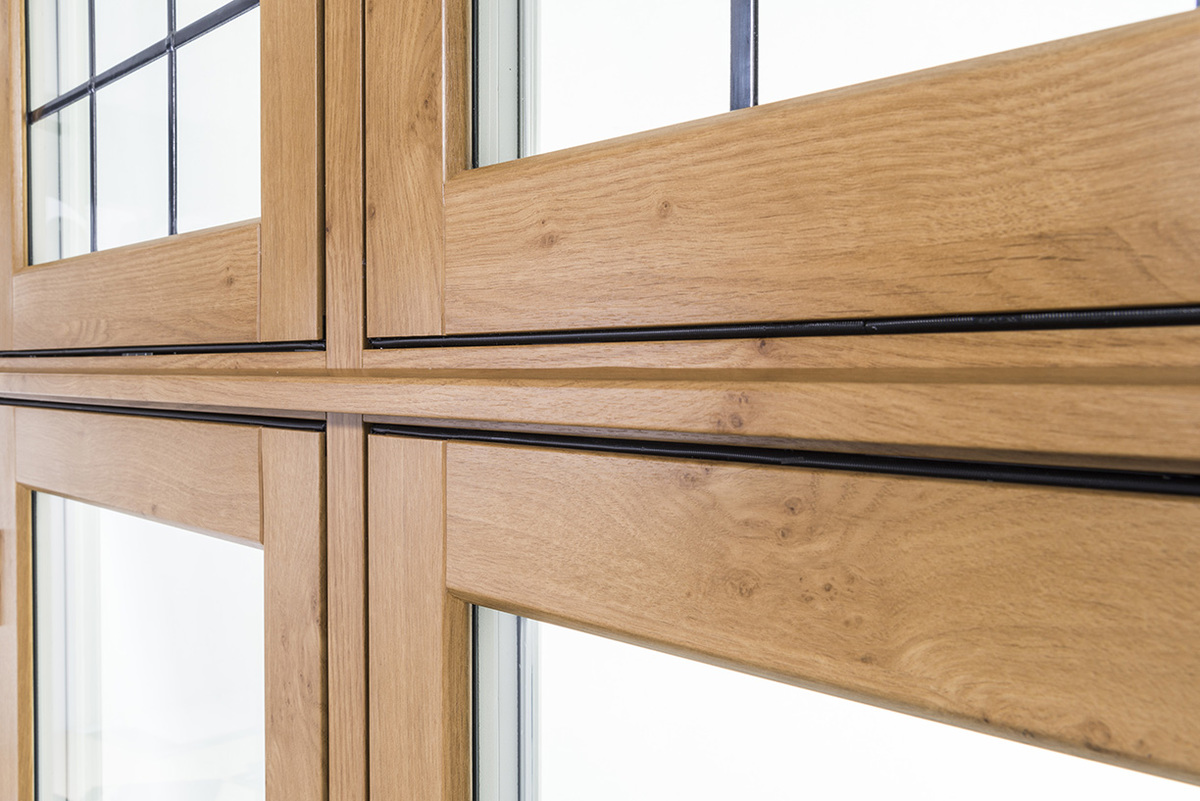
Inside out
One of the advantages of Evolution’s timber alternative doors and windows is that you can choose to have a different color on the inside. While many love the idea of having colored frames or doors to enhance a property’s exterior, white is still the most popular choice internally to avoid clashing with interior décor.
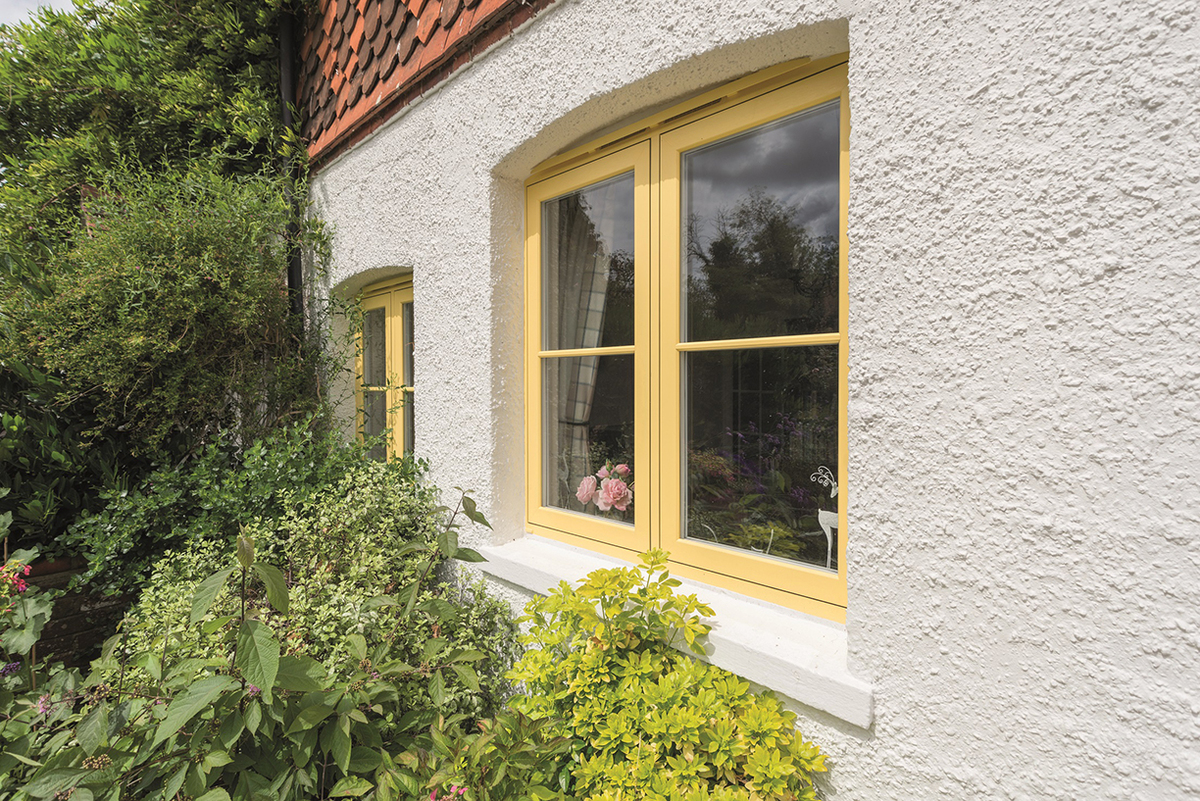
Photos courtesy of Evolution Windows
Lovers of Scandi’s enlightened sense of style will rejoice at the discovery of the beautiful Farringdon and Dorset collections of reclaimed wood furniture from Modish Living.
Modish Living was founded by husband and wife, Chris and Hellen Barlow in 2012 with an idea born around a wooden kitchen table to create an online boutique selling a handpicked collection of beautifully crafted, reclaimed, rustic and sustainable wood furniture.
Renowned for its simplicity and beauty, Scandinavian style shows no sign of losing its popularity in homes and interiors. Its pared-back and minimal style have evolved into a more cozy feel, focusing on sculptural organic shapes, earthy pigments, natural materials and textures, such as wood.
Everything from tempting trestle dining tables and family-friendly extendable tables to a welcoming wood bench and seriously stylish sideboards, these naturally rustic additions will add an instant Nordic vibe to your dining space. Made using aged reclaimed wood rescued from old buildings, Modish Living’s Farringdon and Dorset collections are the perfect fit for Scandi design devotees. Skillfully crafted to enhance the natural tones of the wood and given a renewed sense of purpose and style, these pieces evoke a sense of comfort, style and happiness.
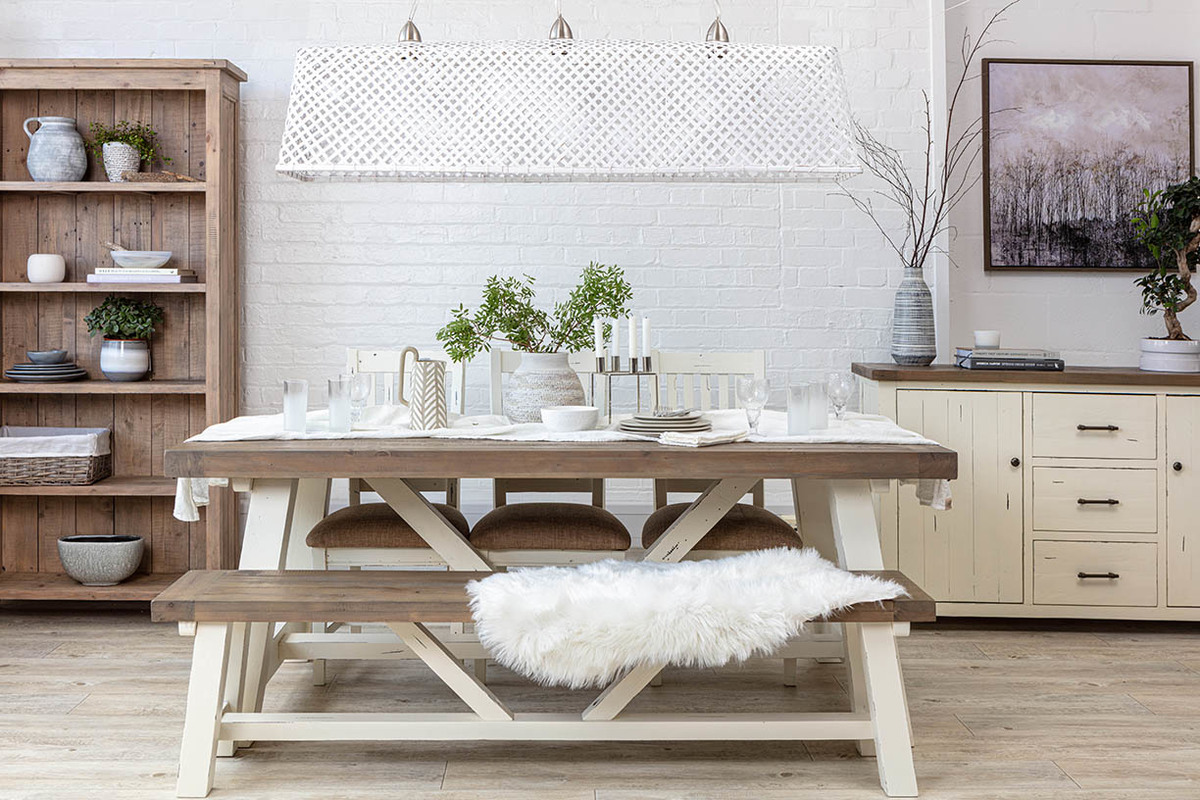
As well as providing essential storage, this sideboard has a natural beauty and character. The natural markings of the reclaimed wood shines through the white painted finish, giving it a lived-in authenticity perfect for a Scandi feel dining room.
The distressed white base of the Dorset Extendable Trestle Table keeps the aesthetic neutral while adding warmth. Accessorize with a sheepskin rug and the large white bamboo pendant is styled here.
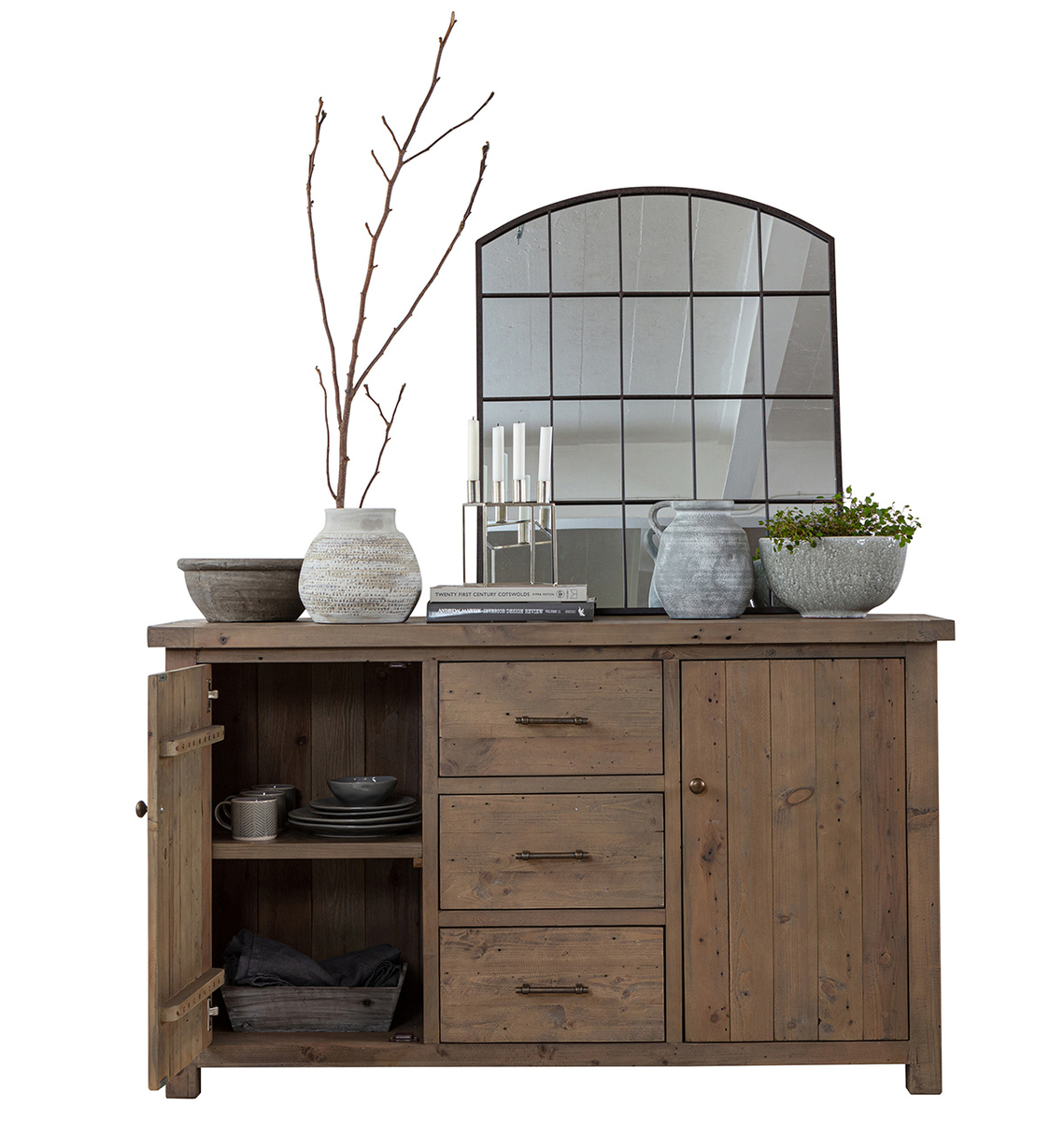
Three central drawers and two large cupboards offer plenty of storage for your kitchen essentials. The subtle lacquer accentuates the natural markings and history of the wood, whilst giving it a distinct Nordic feel.
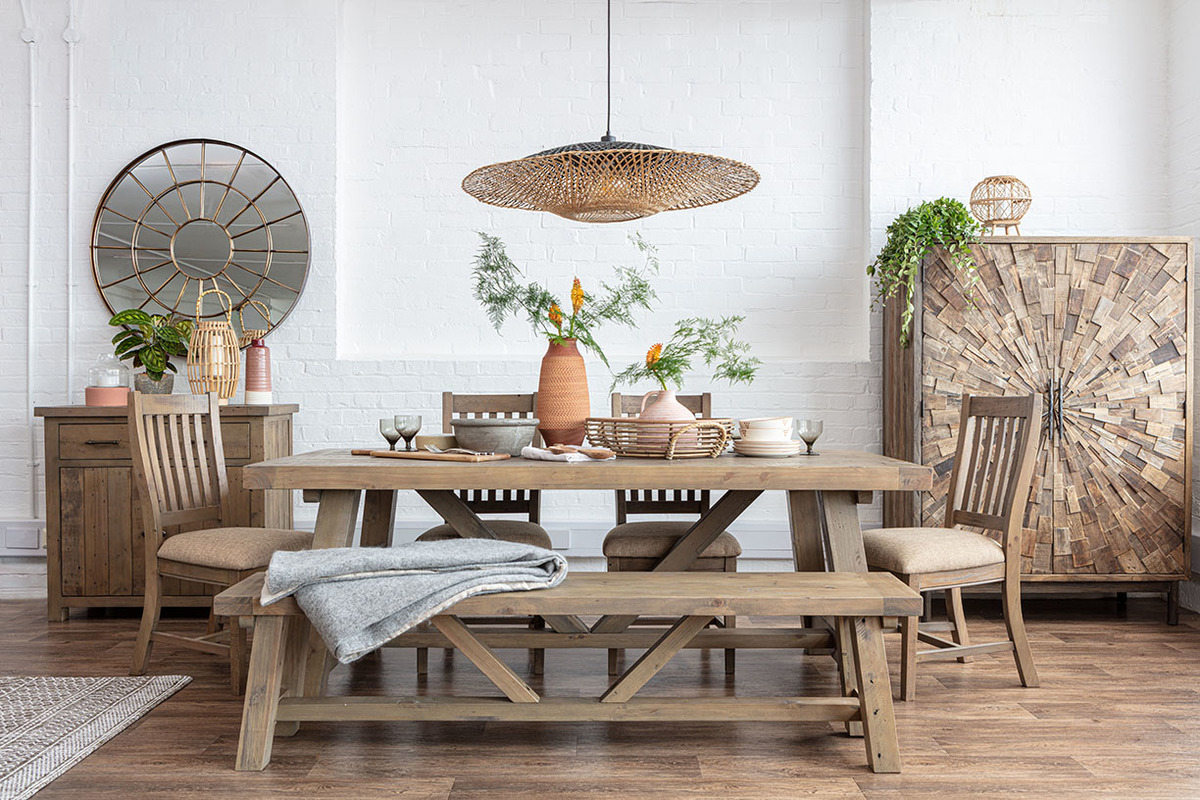
The large pendant above the Farringdon extending table is made out of biodegradable woodchip; the perfect pared-back accessory to complement this 100-percent reclaimed wood collection.
Photos courtesy of Modish Living
It’s time to start thinking about resolutions. The new year is the perfect time to make changes and create a fresh perspective. Follow these 3 tips from Rebecca Snowden, Interior Style Advisor at Furniture Choice, for more mindful living in the new year.
Everything is fast, easy and digital, yet natural instinct pushes us to disconnect and slow down to regain our sense and quality of life.

1. Start with a clean and calm neutral palette
Begin the year refreshed and rejuvenated with the help of a home environment that focuses on living well.
Start by introducing a quality of softness into the home, coupled with interior design that’s comforting and inviting. “Let the intention of creating a clean and soothing ambiance guide your design decisions,” advises Rebecca. “Ultimately, the goal is to create a personal haven you’ll love going home to relax in.”
Make it a priority to get plenty of good quality sleep. In the bedroom, an oatmeal fabric bed presents the perfect starting point in a space meant for restful slumber. Introduce neutrals in varying tones for interest and depth. Safe, perennial hues to try to include white, soft grey and the recently popular greige.
Select comfortable bedding with minimal prints to focus on creating an uncluttered, restful environment. Where possible, go with furniture that features curves and organic lines instead of sharp, straight edges.
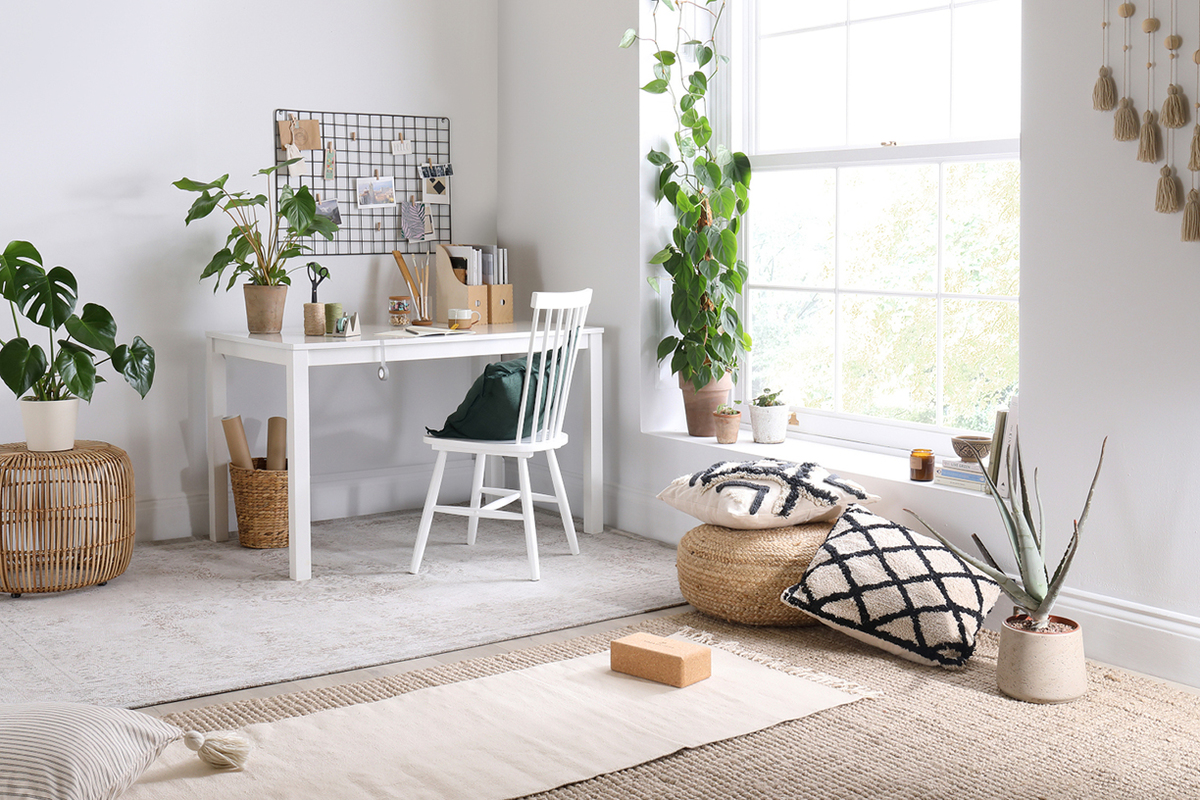
2. Nature is nurturing
Nothing relaxes the mind more than being surrounded by nature; particularly, plants. Start the year on a green note by maximizing on the benefits of having indoor plants. Choose a mix of large and small greenery and varieties that help clean the air. Leafy, trailing plants also inject a little wildness to create a tropical-inspired ambiance.
Besides making the air fresher, their lush green color is soothing on the eyes after a long day of working with screens.
To continue the natural theme, pick furnishings made with materials like wood, rattan, or clay. “The warmth and rawness of their surfaces contribute to a design that has a soothing, back to nature vibe,” says Rebecca.
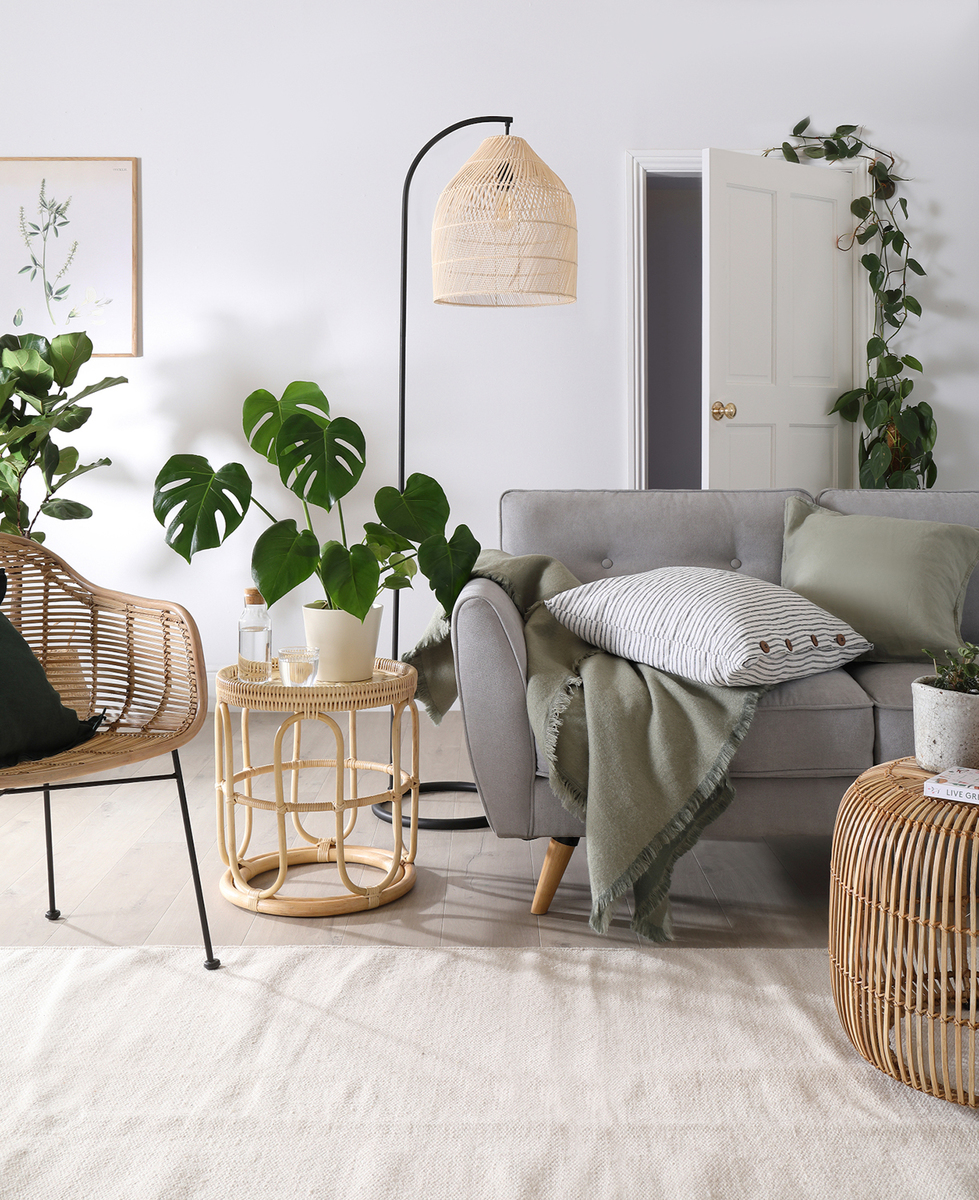
3. Dedicate a corner for conscious relaxation
As a reminder to make wellbeing a priority for the year ahead, allocate a corner that’s dedicated to relaxation. “A little nook will do; you’ll only need enough space to practice your preferred stretches,” says Rebecca. For meditation and stretching exercises, fit it out with a yoga mat or thick rug. “And if you have a work desk at home, it’s a good idea to carve out a zen zone within the same room for quick stretch breaks.”
Maintaining the same neutral palette, style the space in light hues, and include plenty of plants. Another factor to consider is the accessibility of natural daylight, as it can help reset a confused circadian rhythm. A wellness-inspired space that embraces disconnecting and being present will likely become a favorite spot in the home.
Photos courtesy of Furniture Choice Ltd














